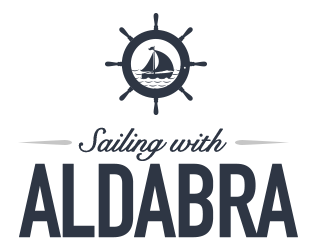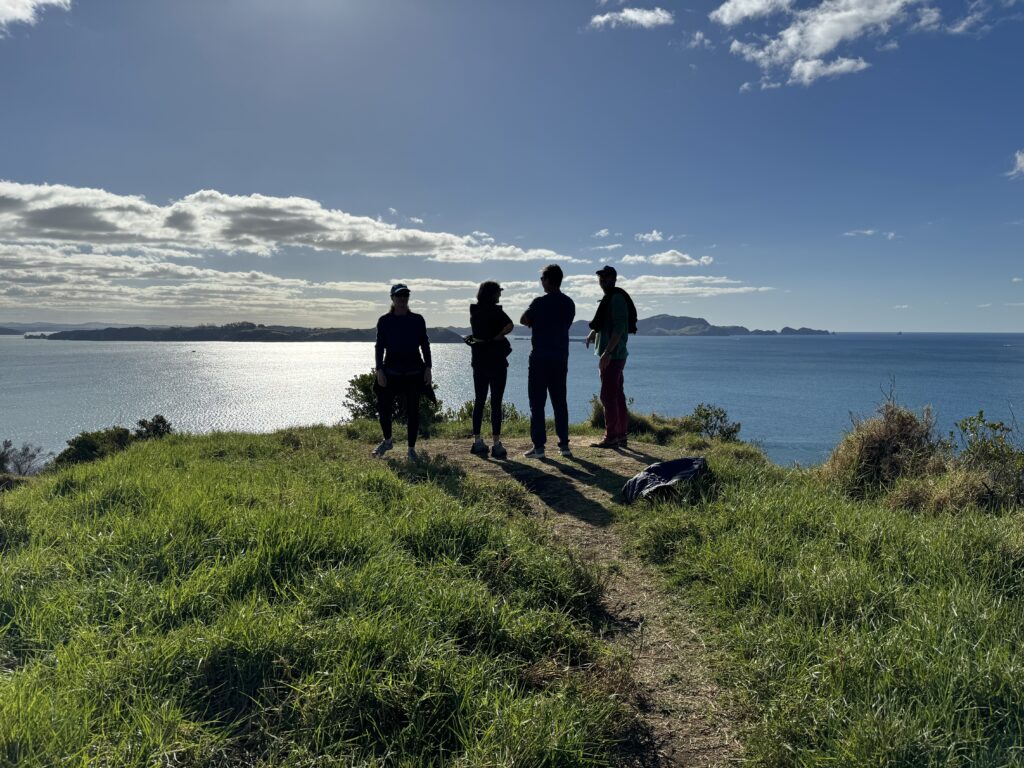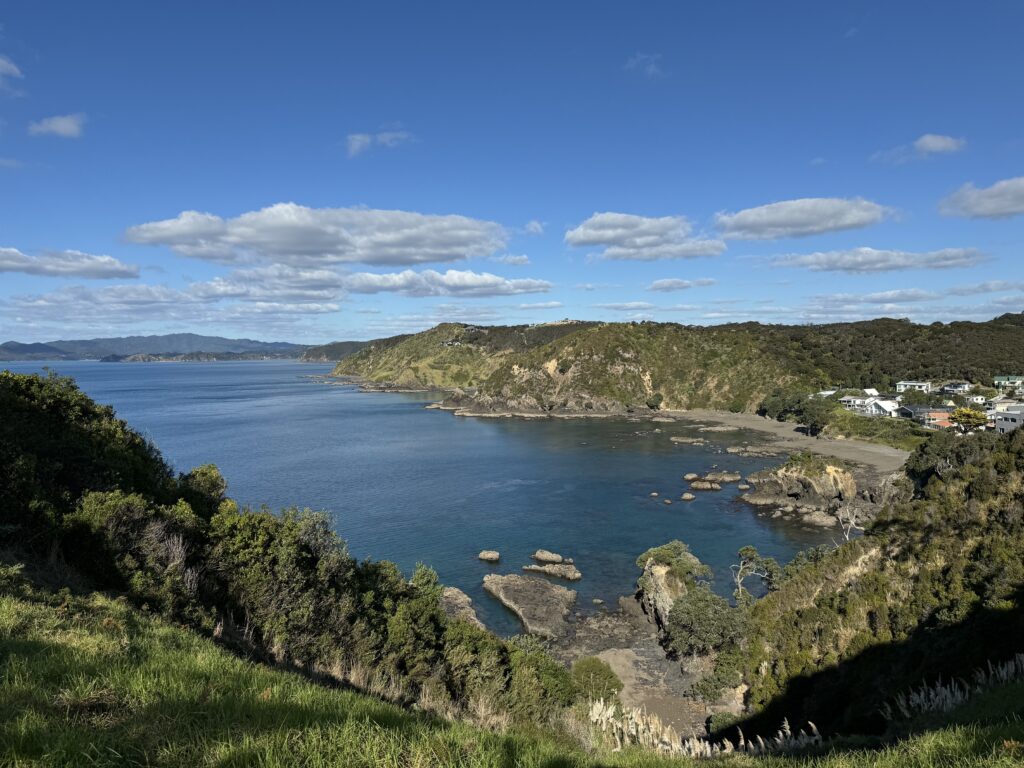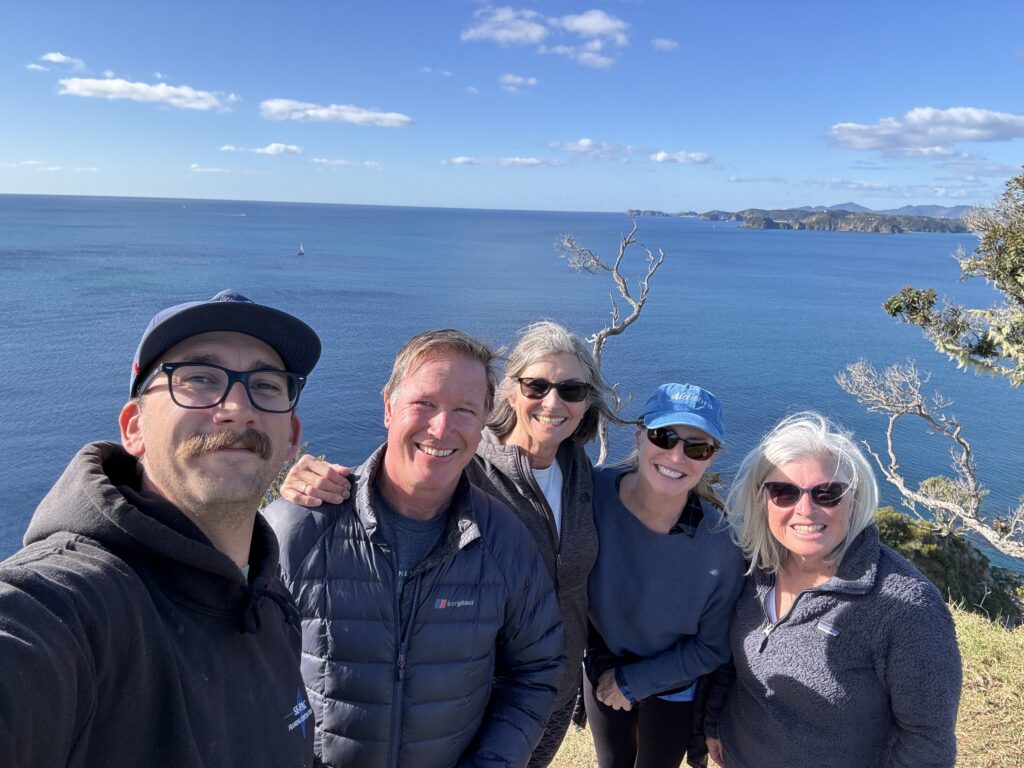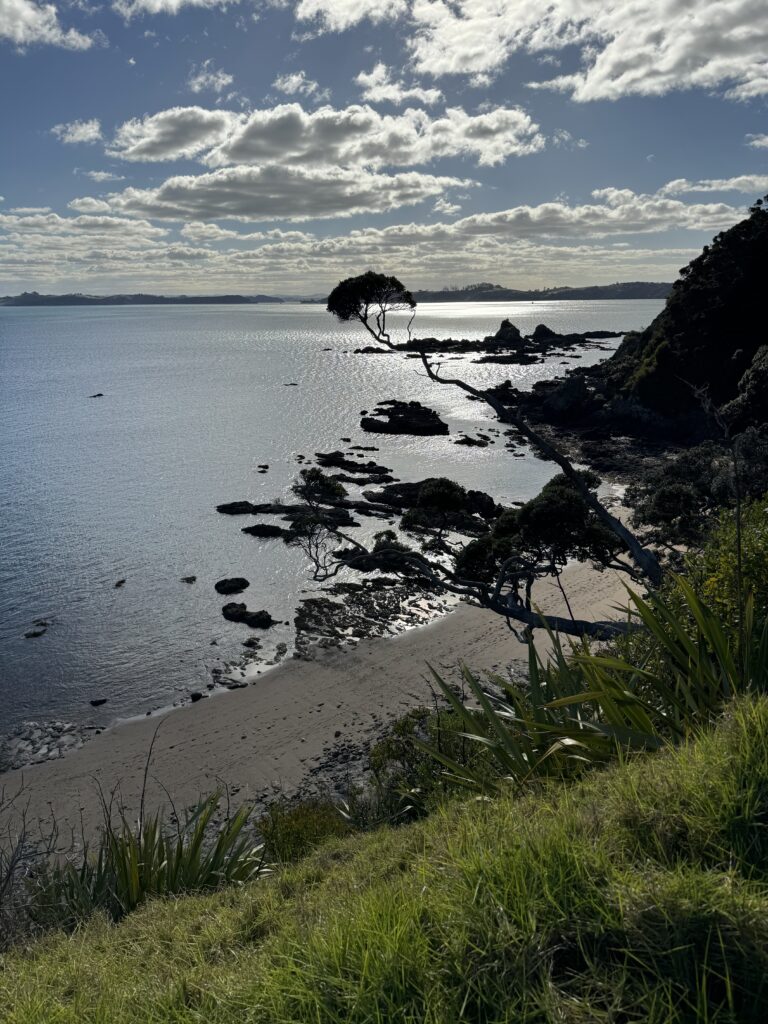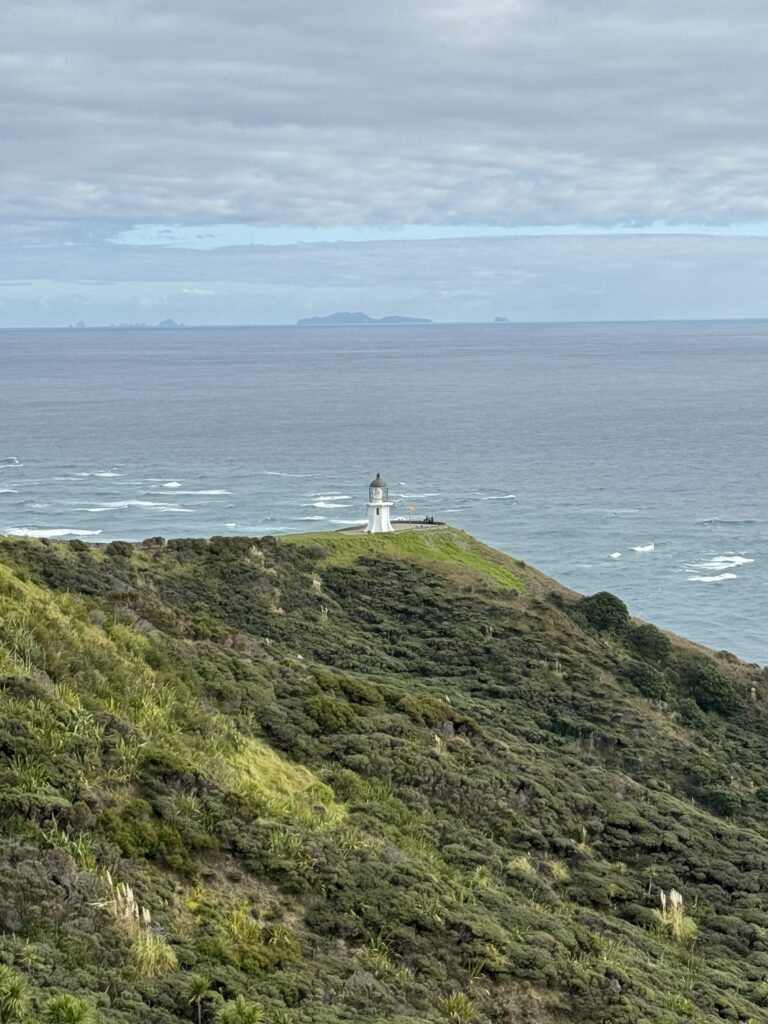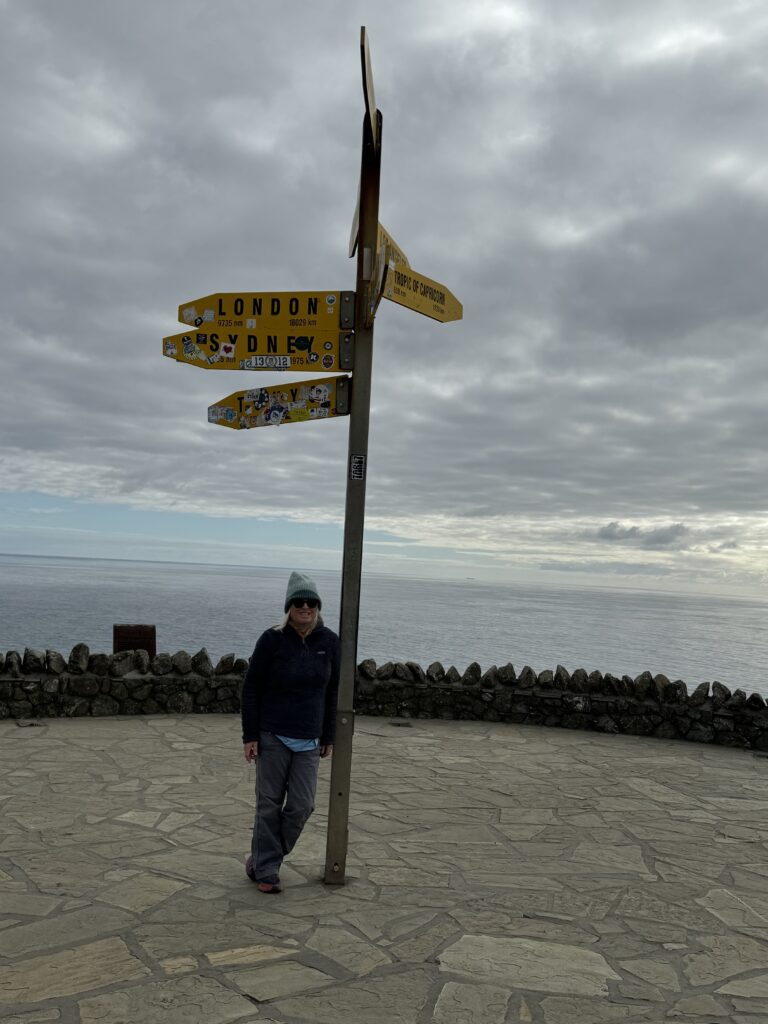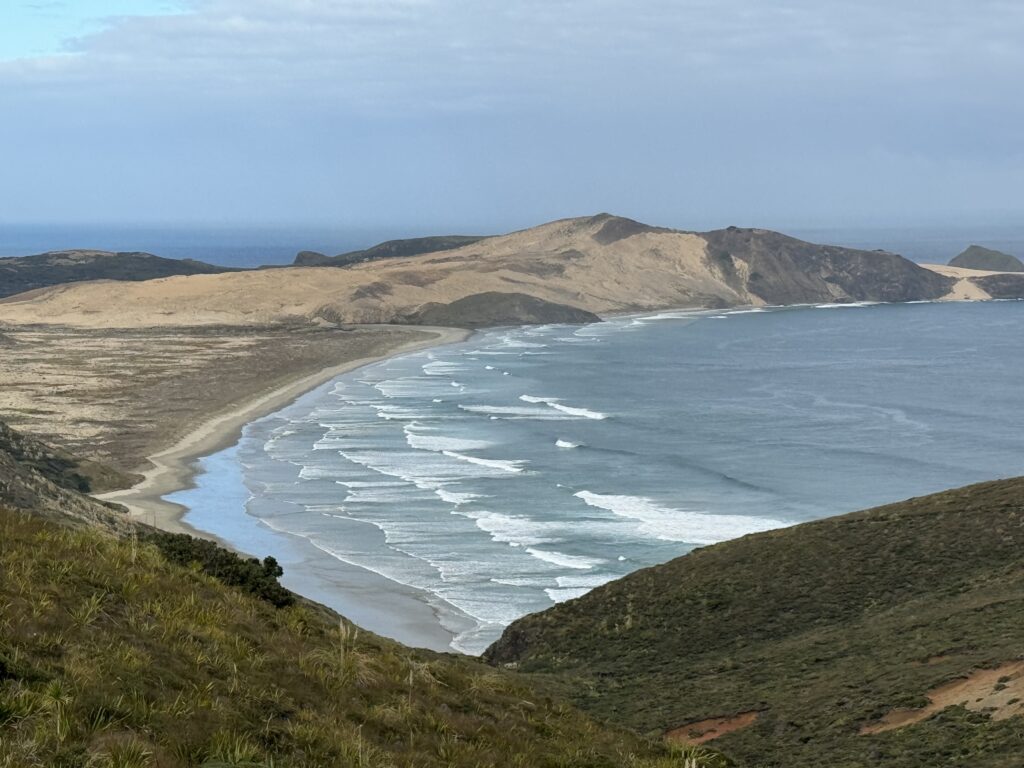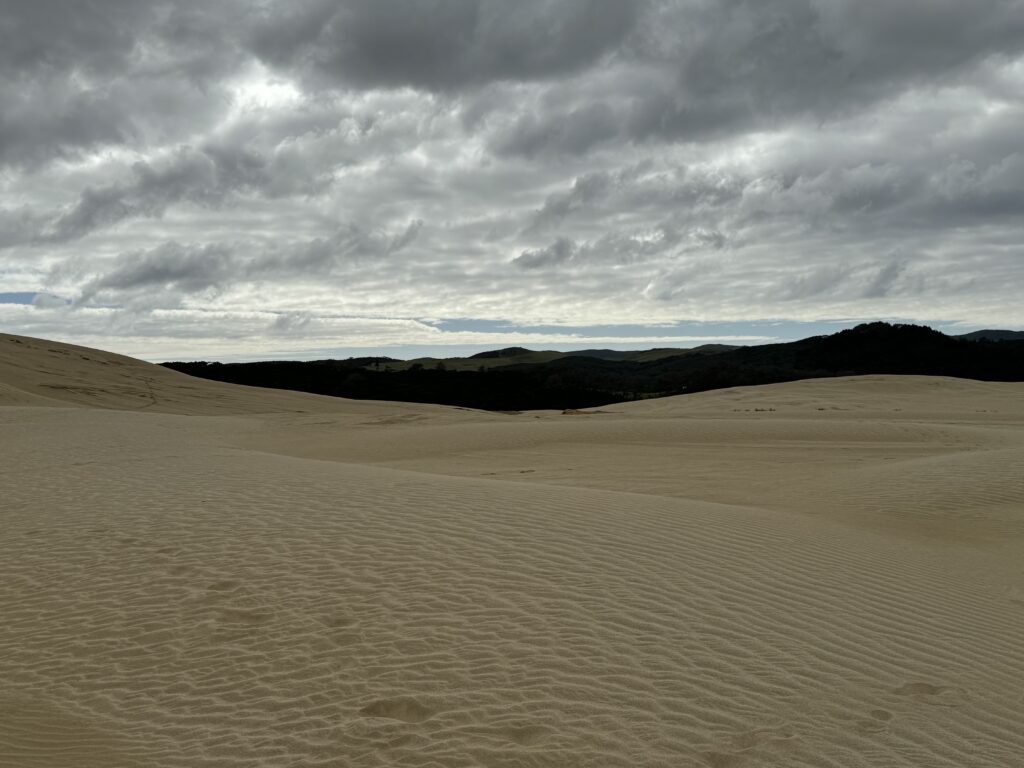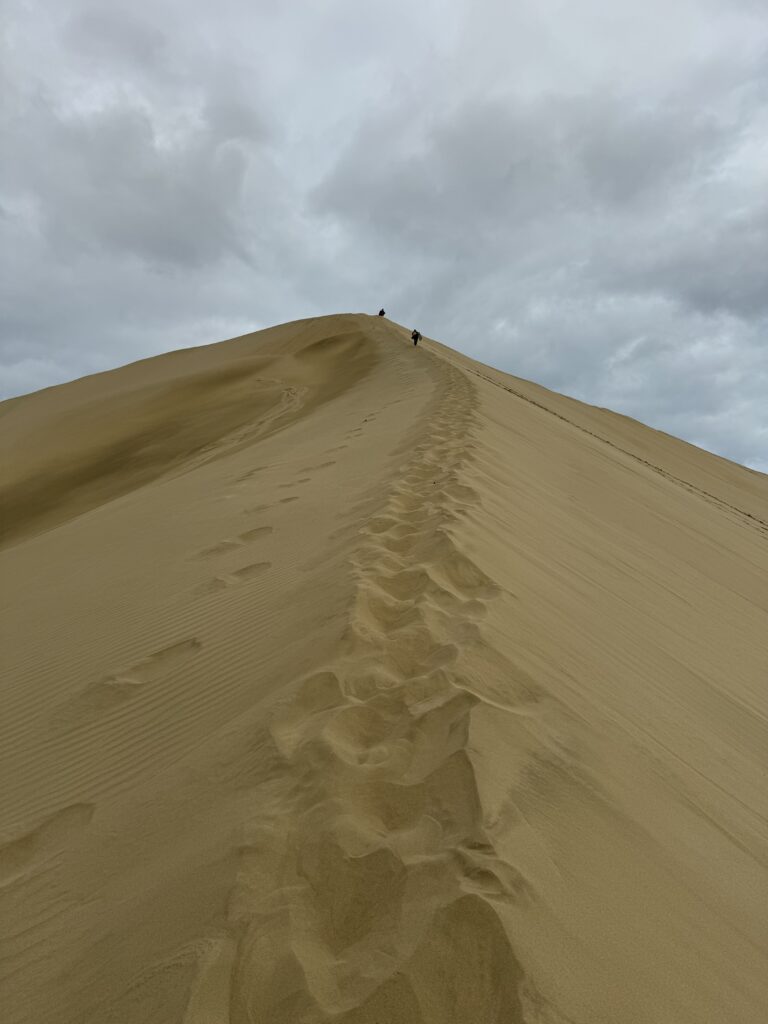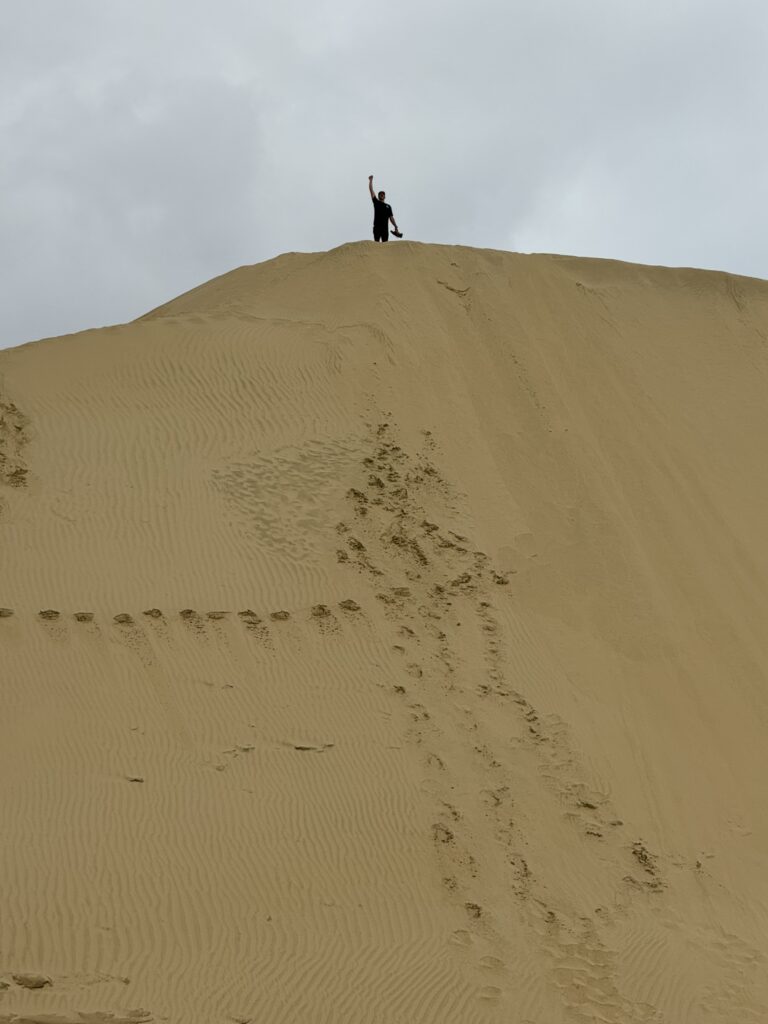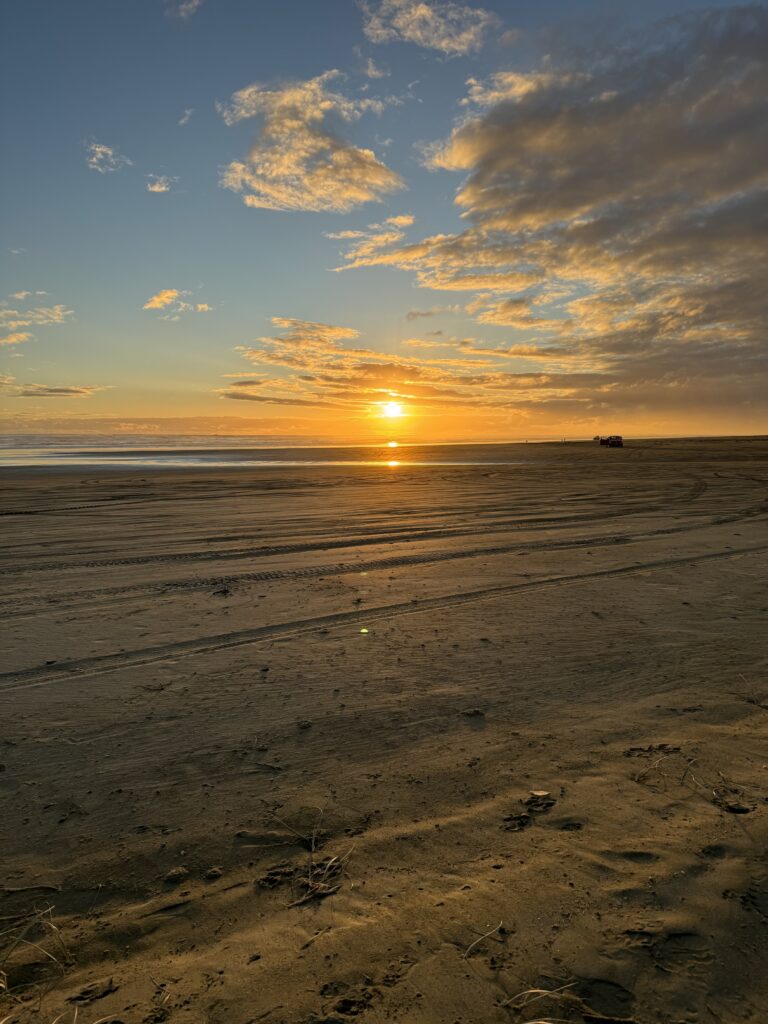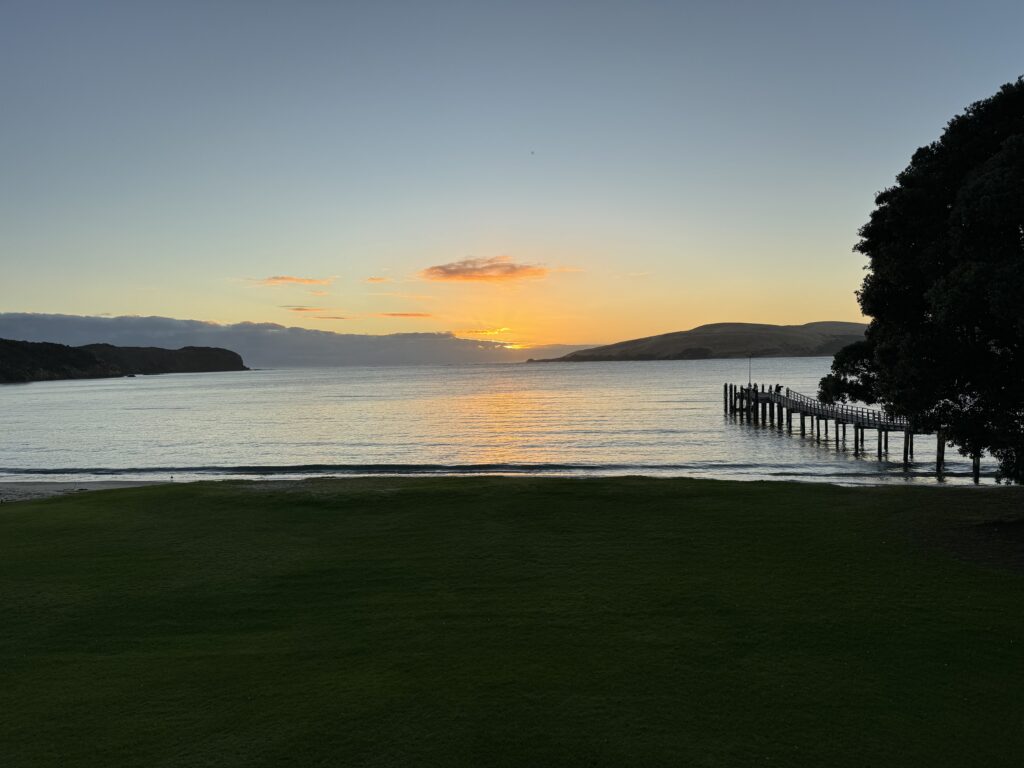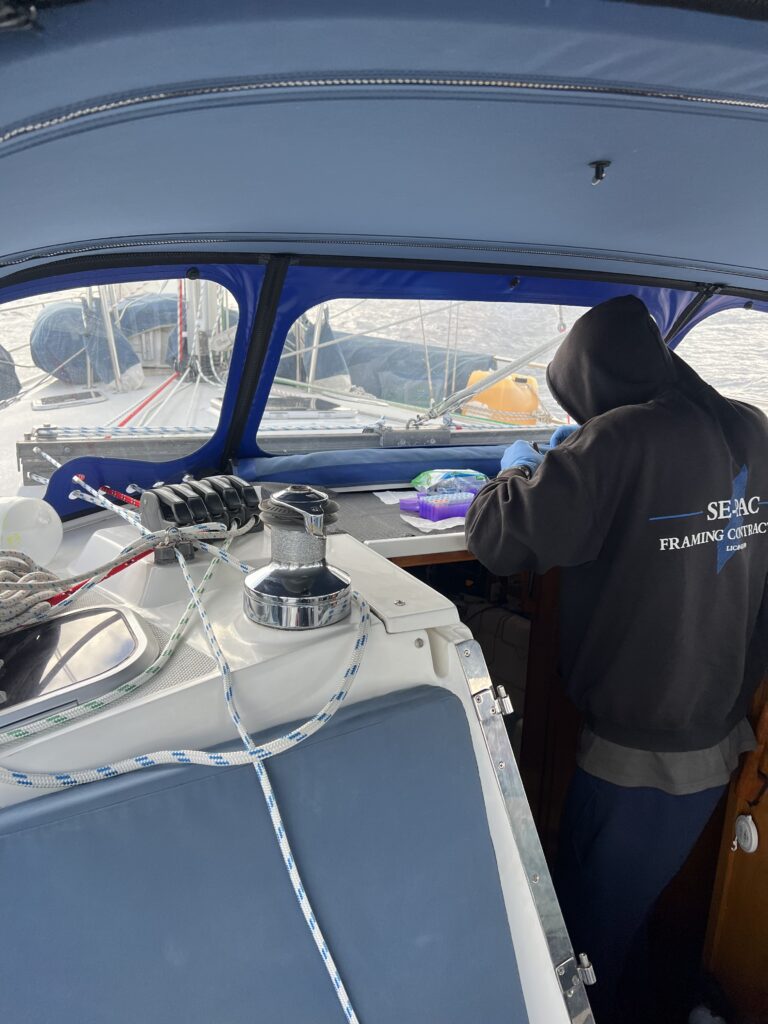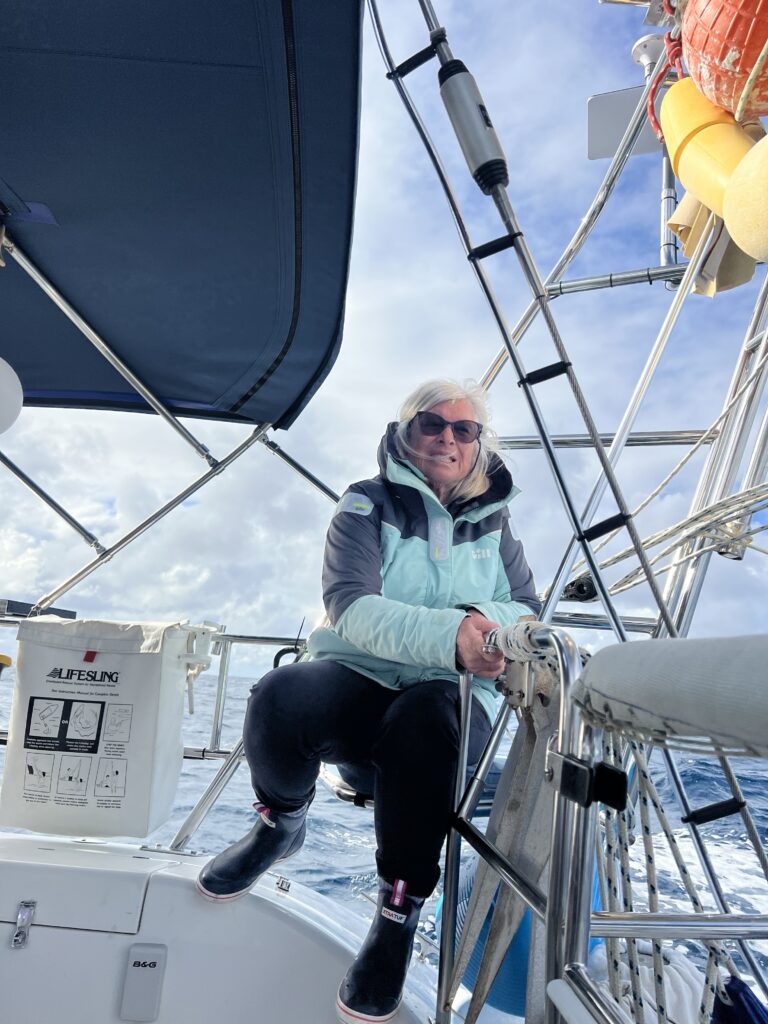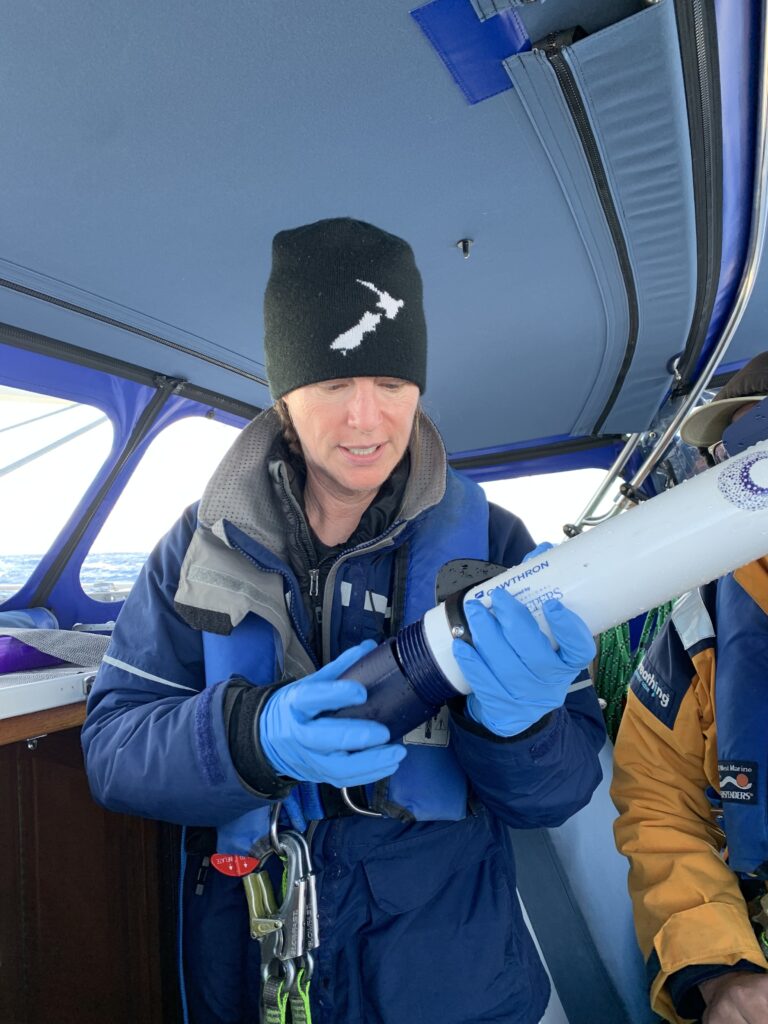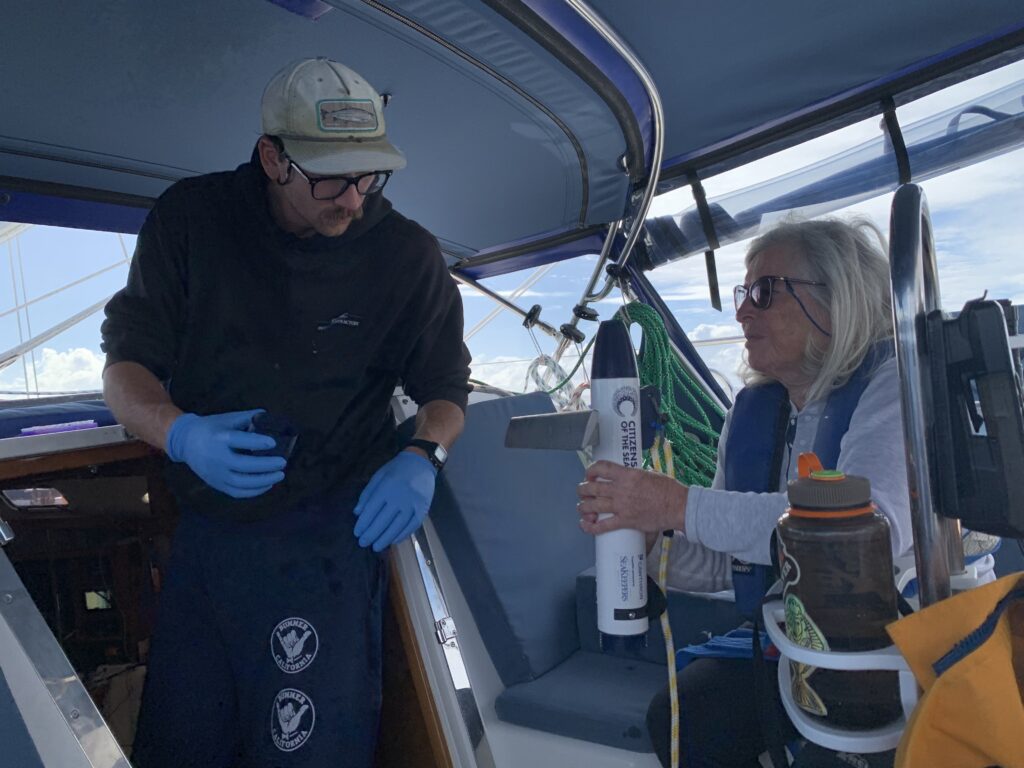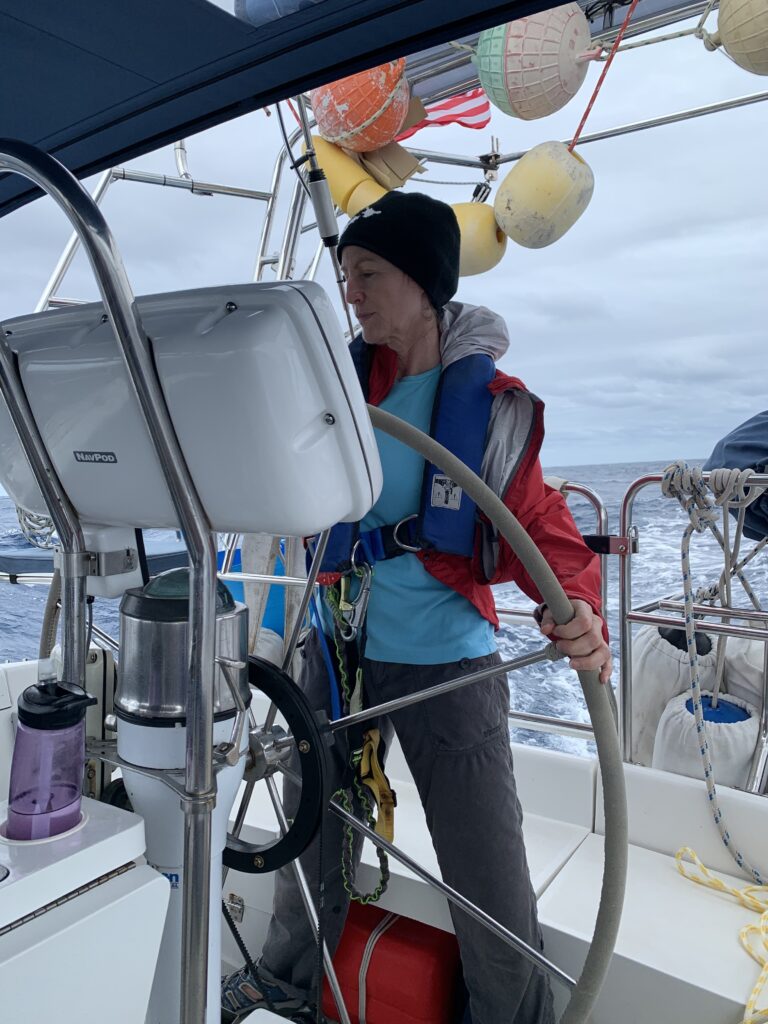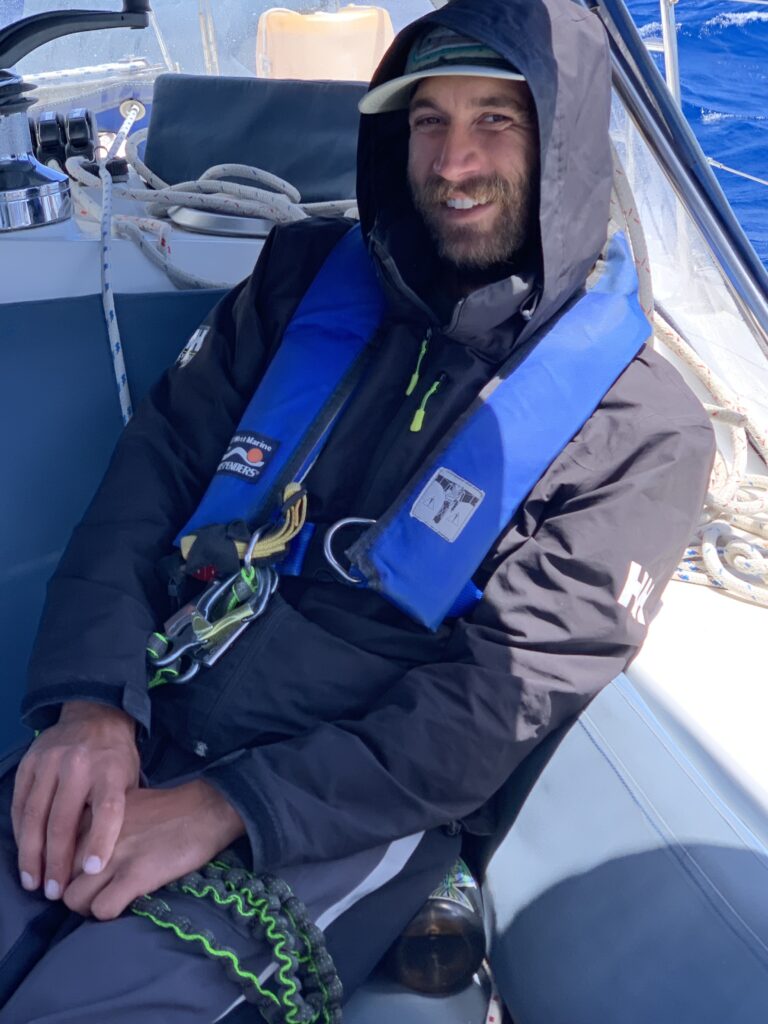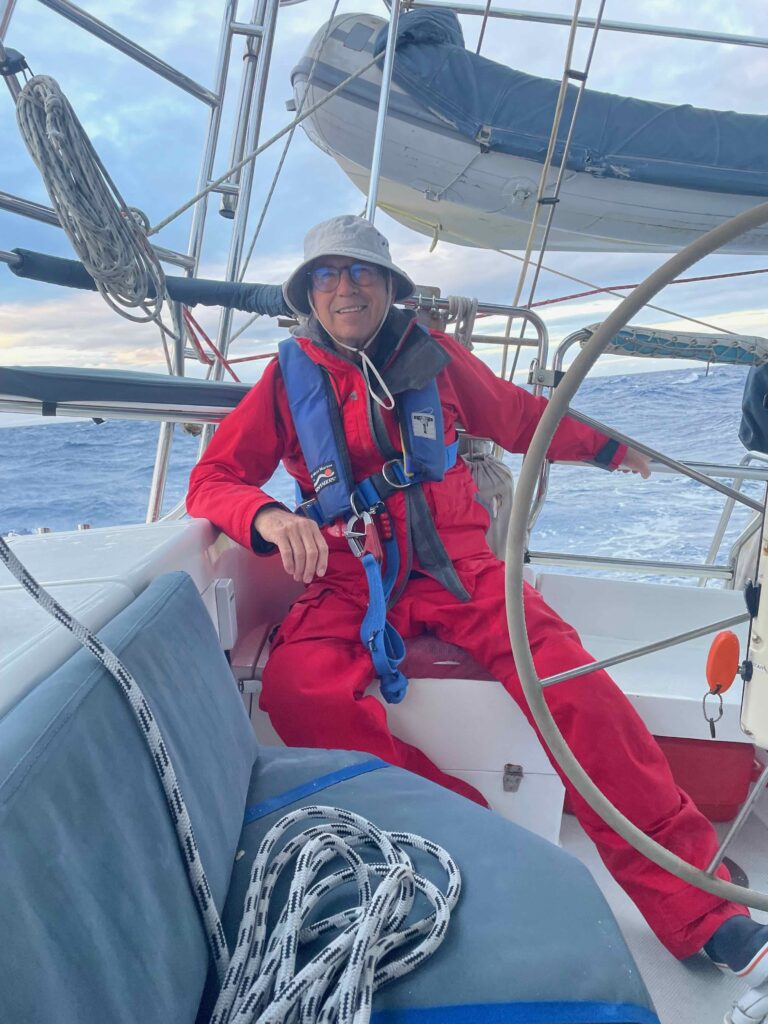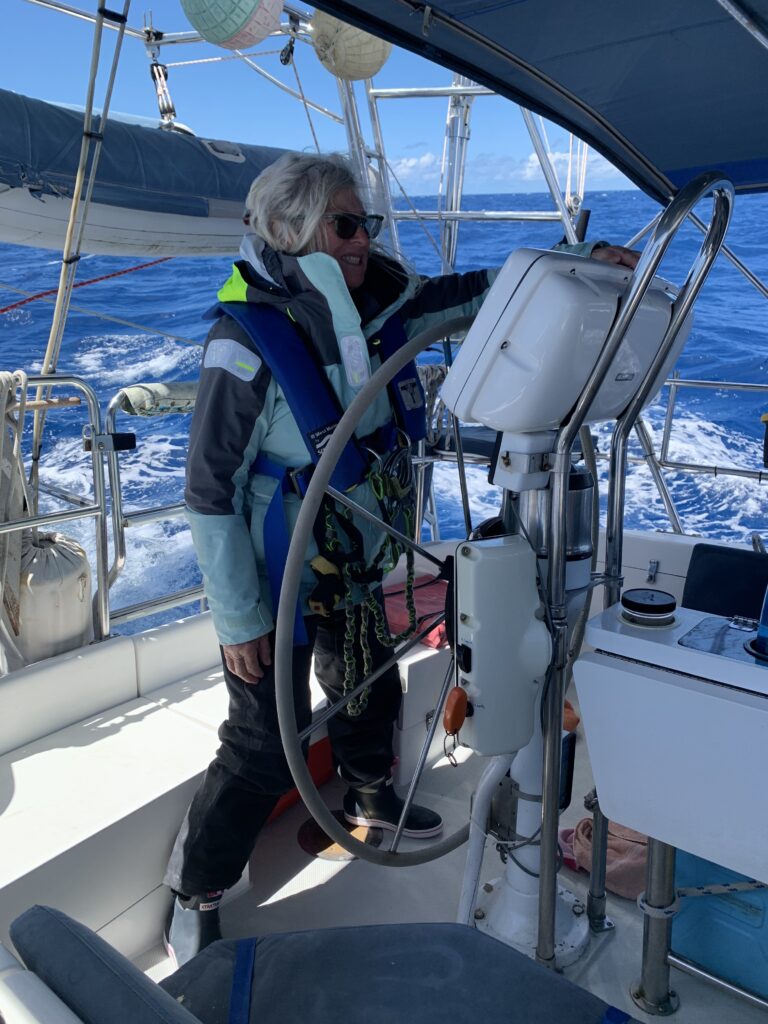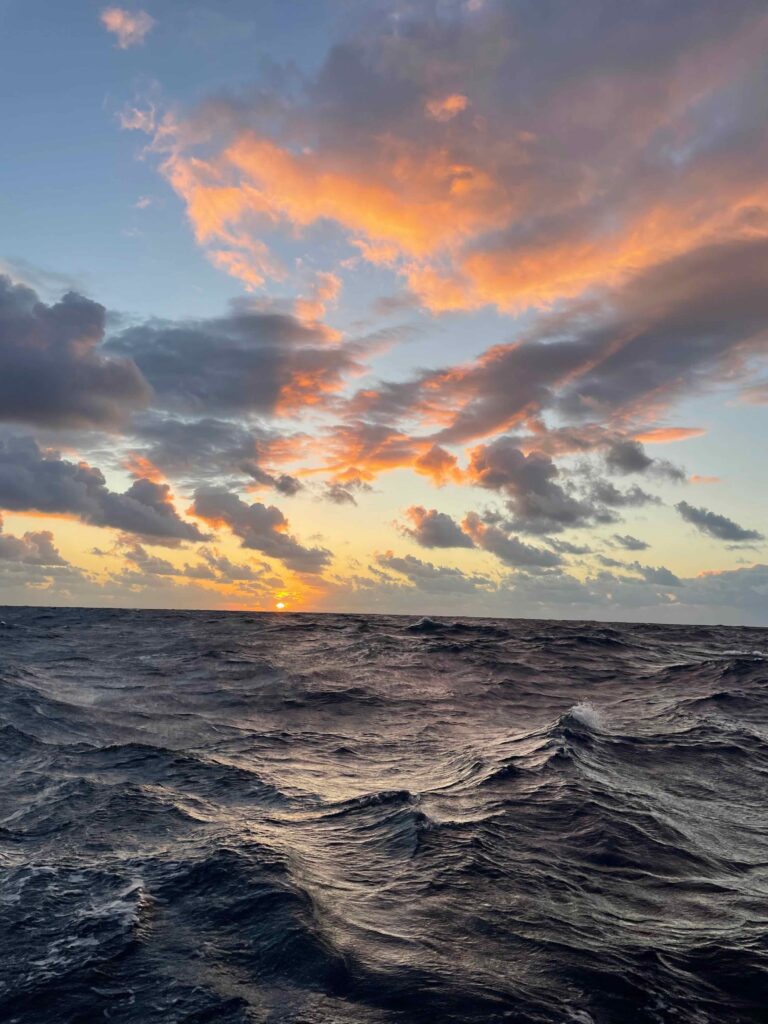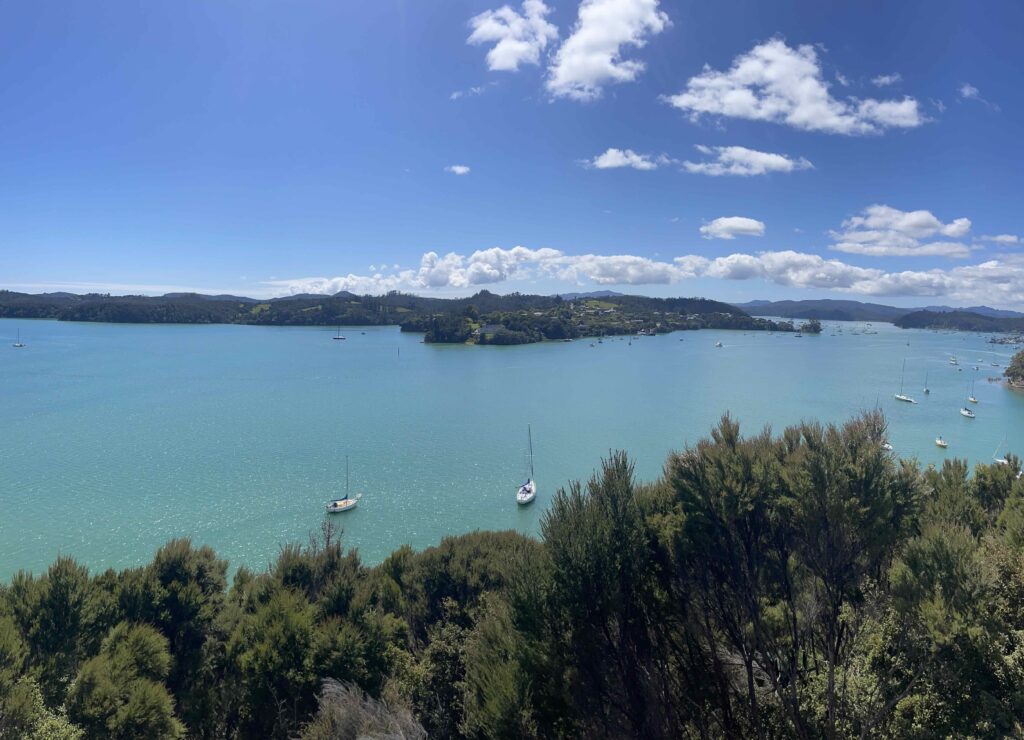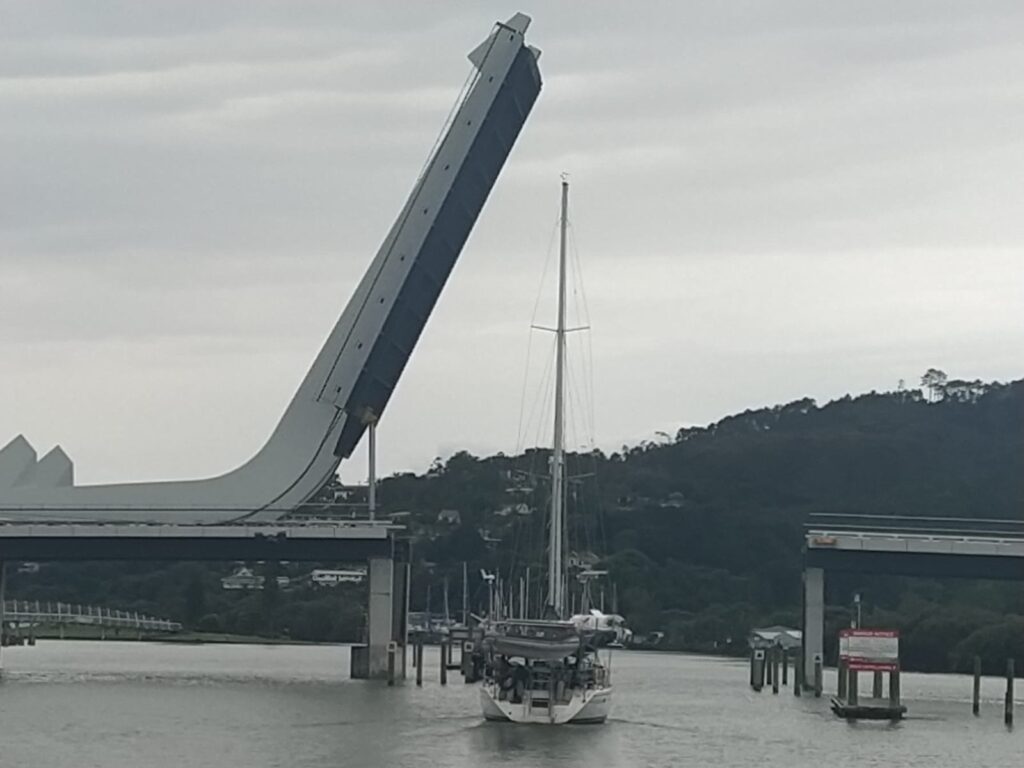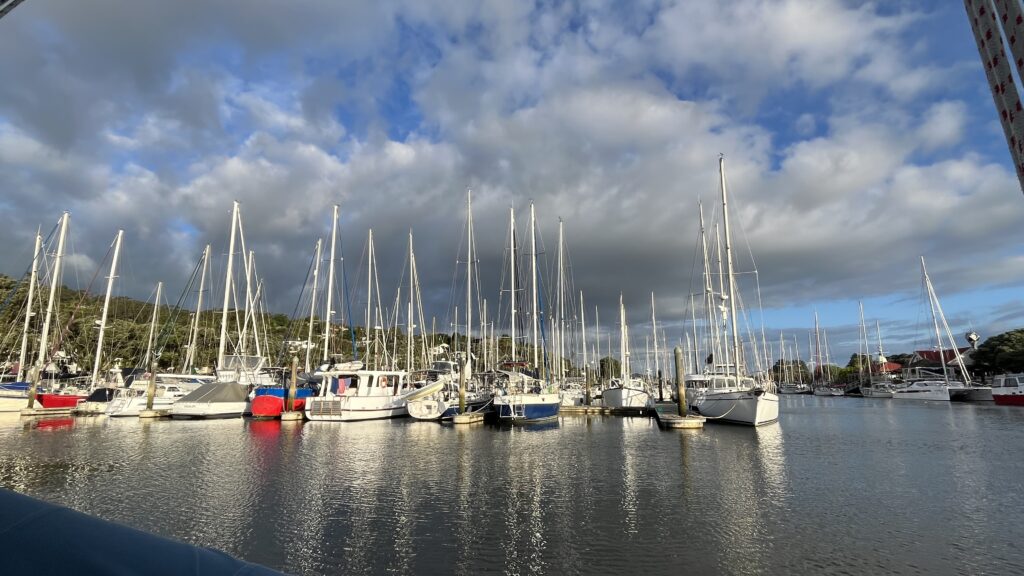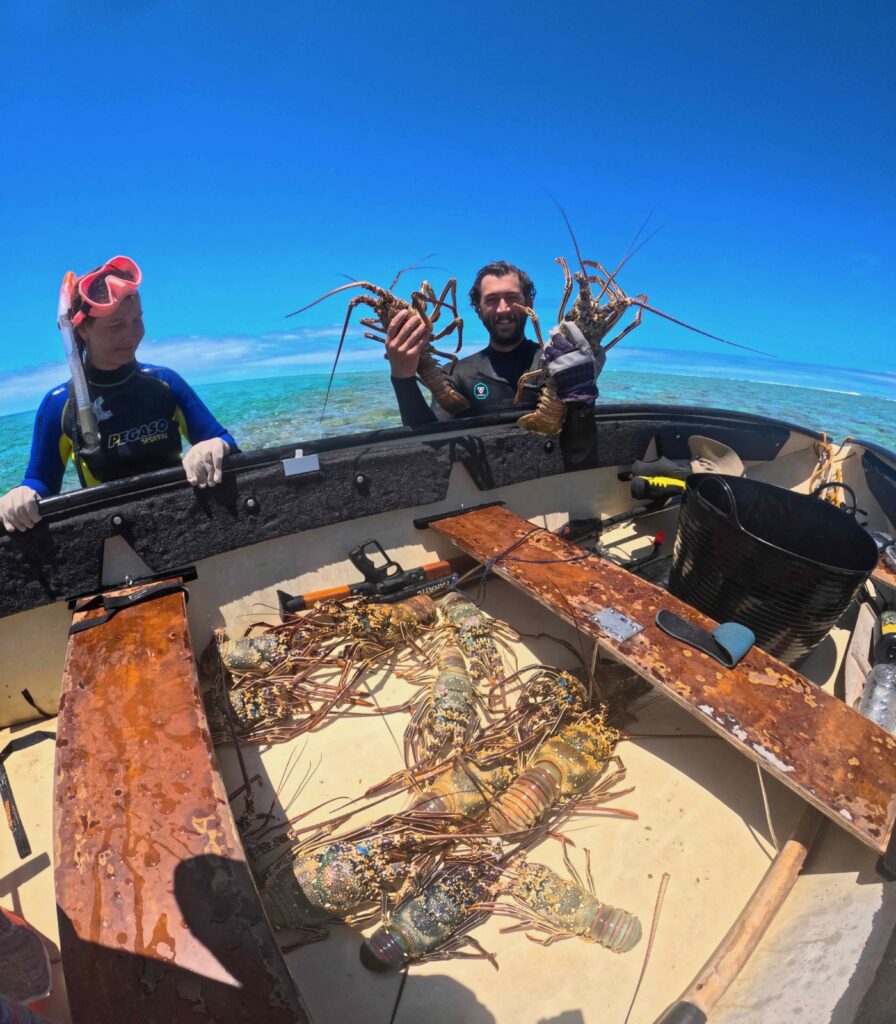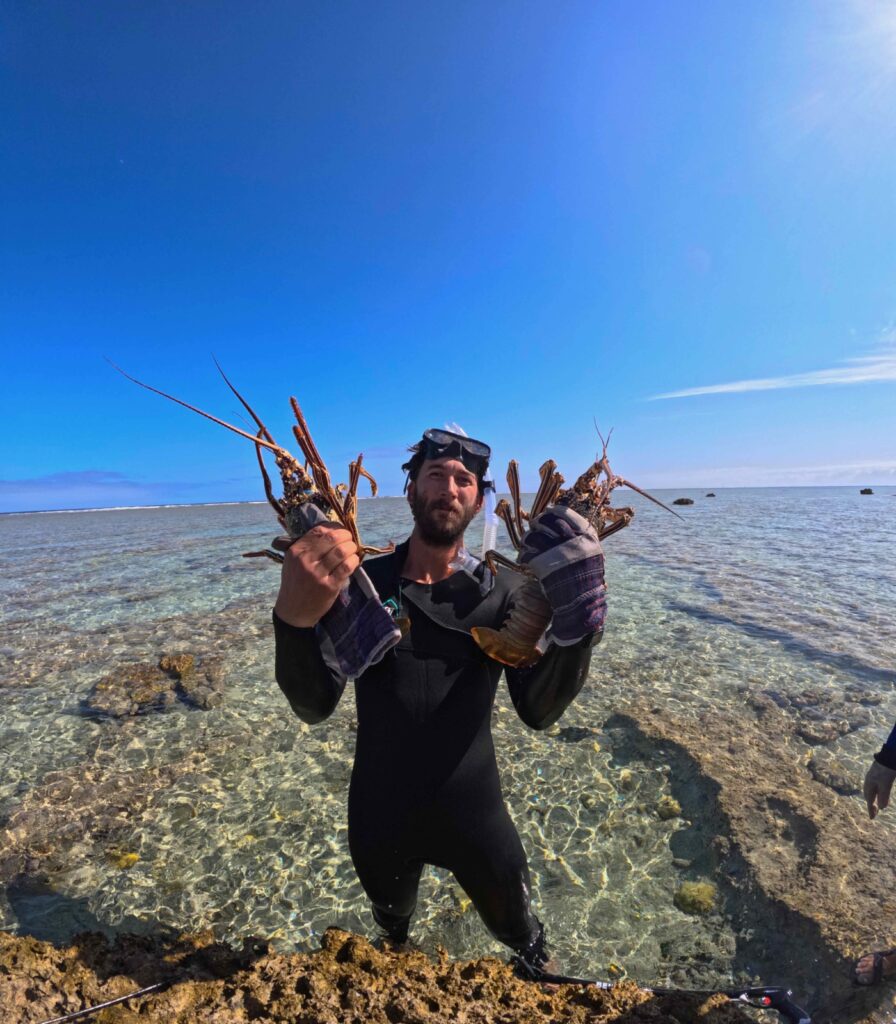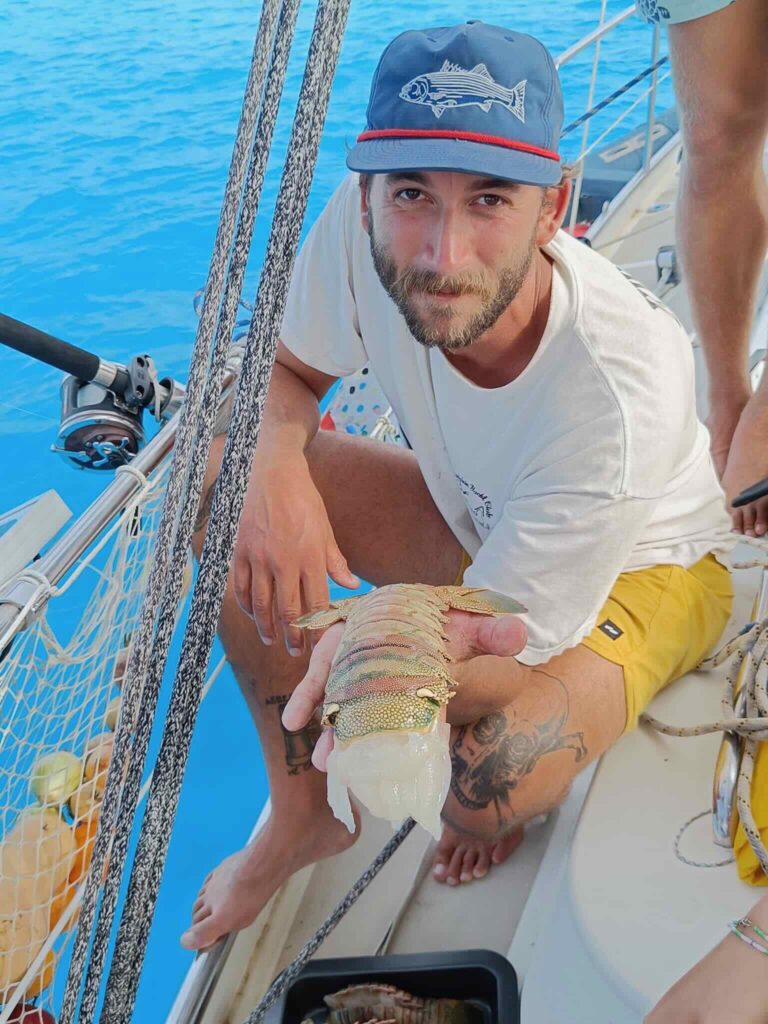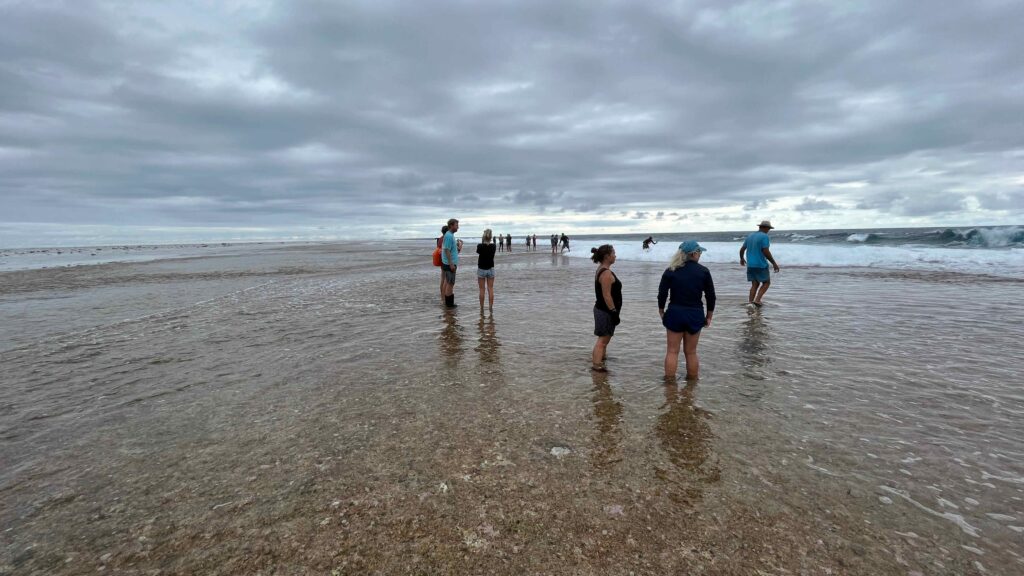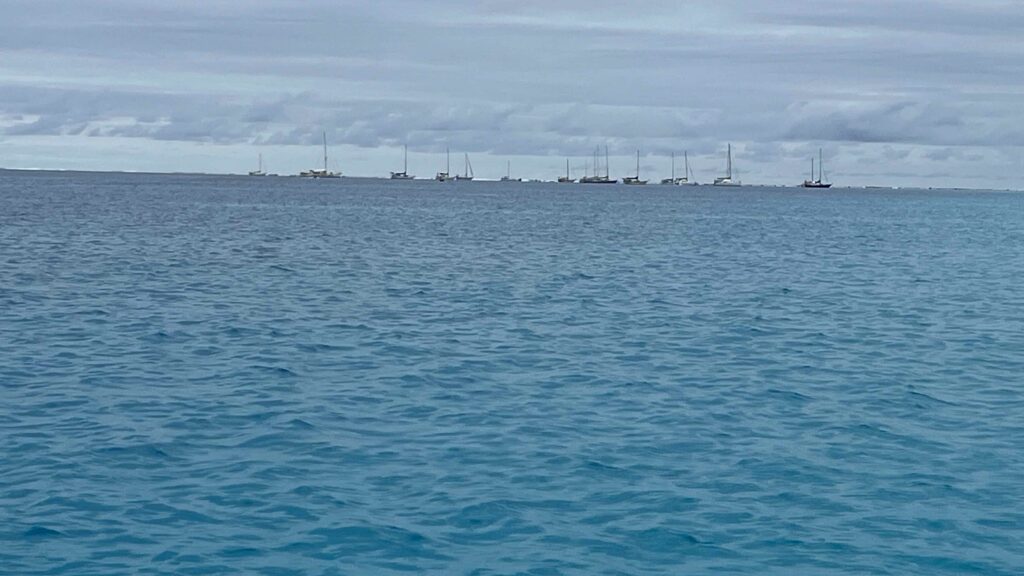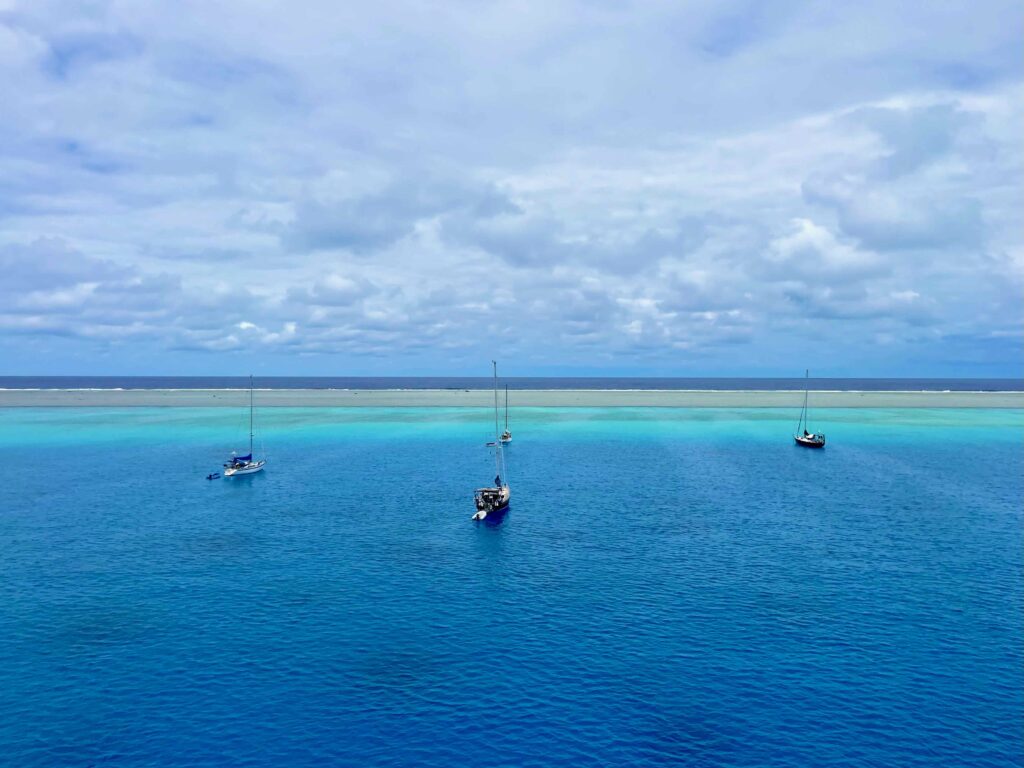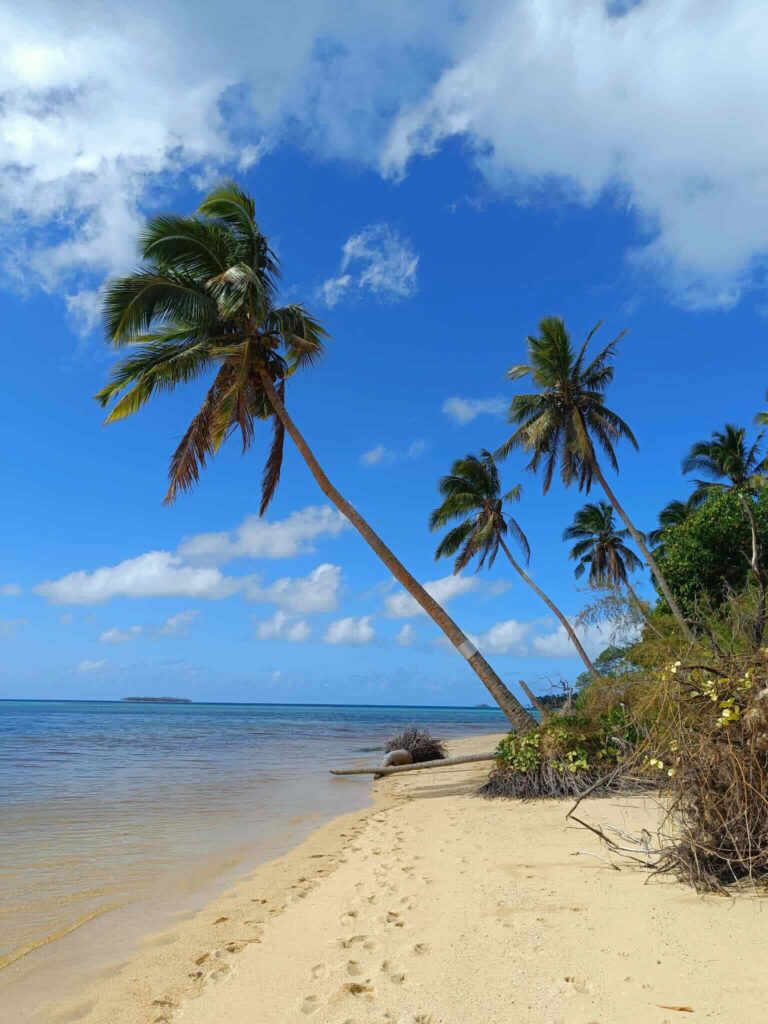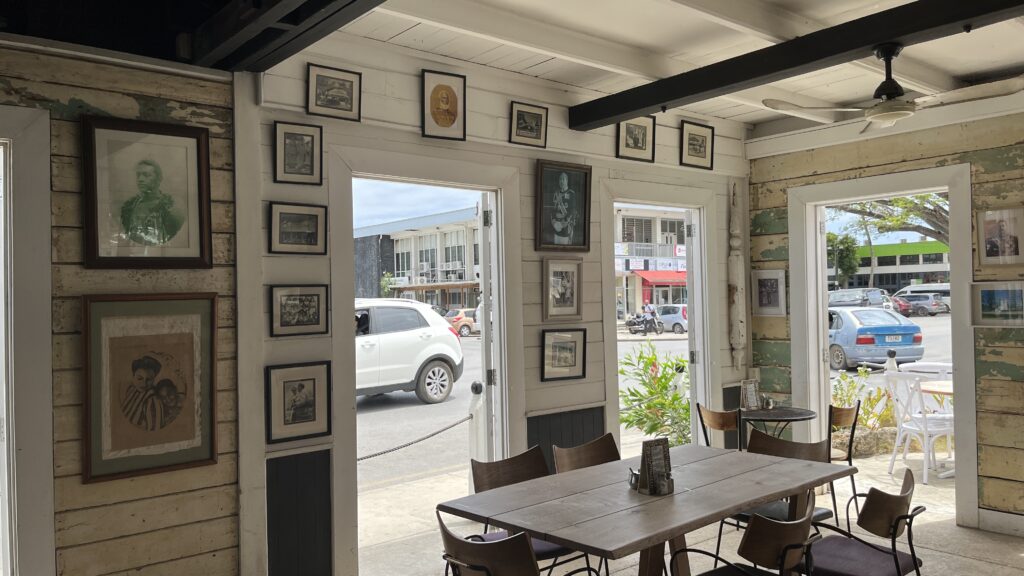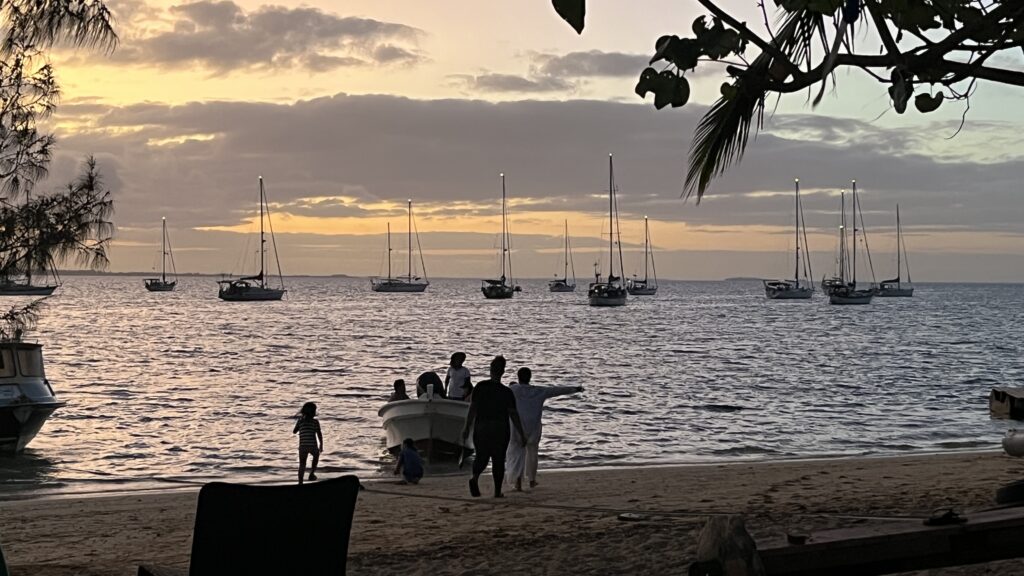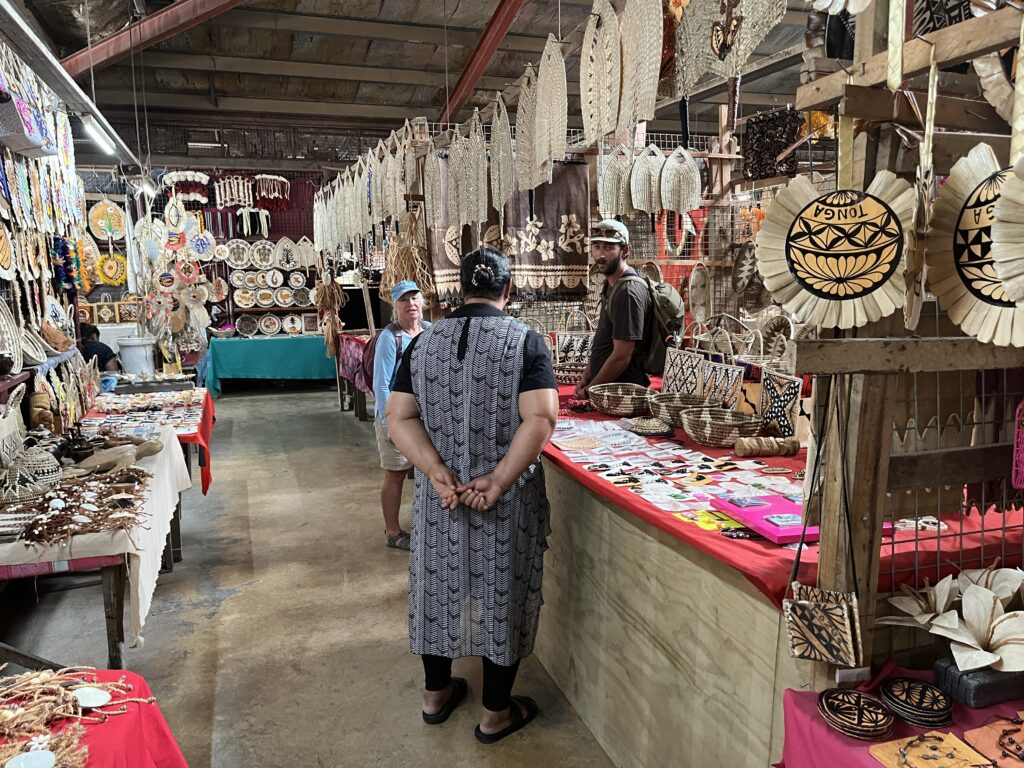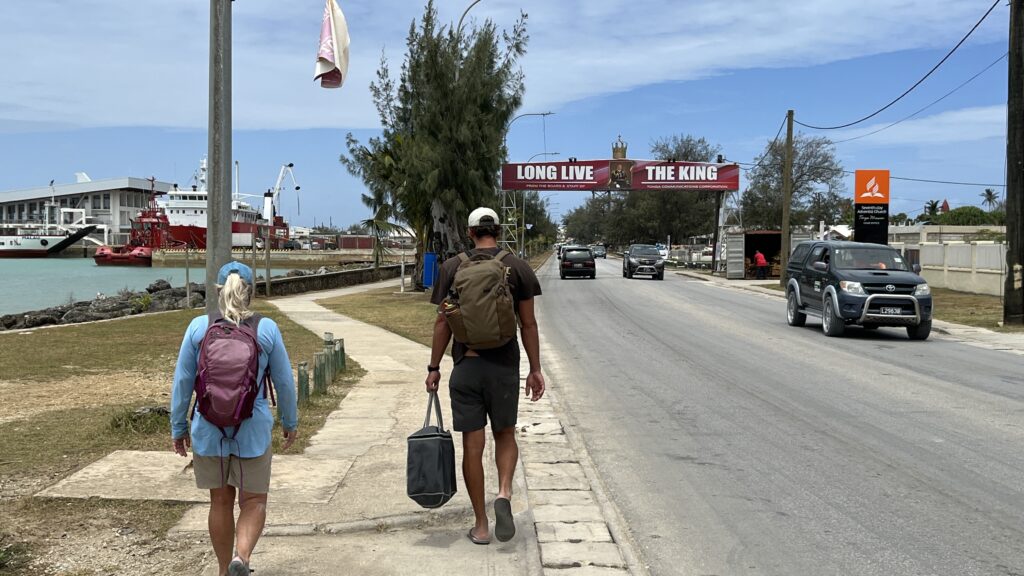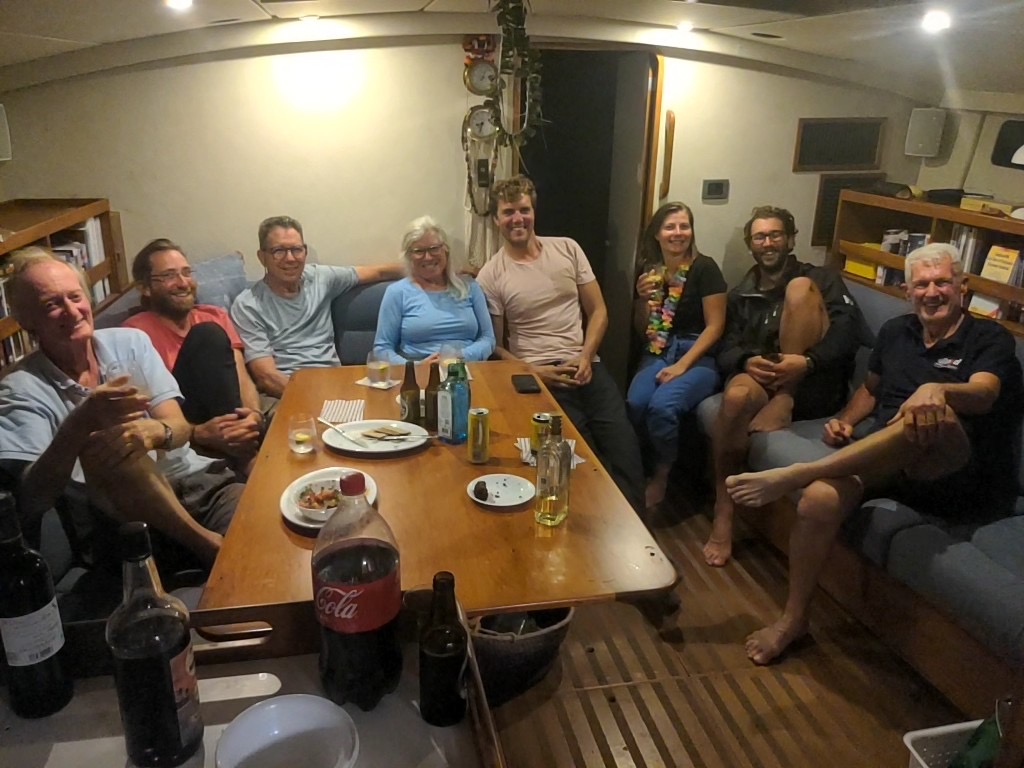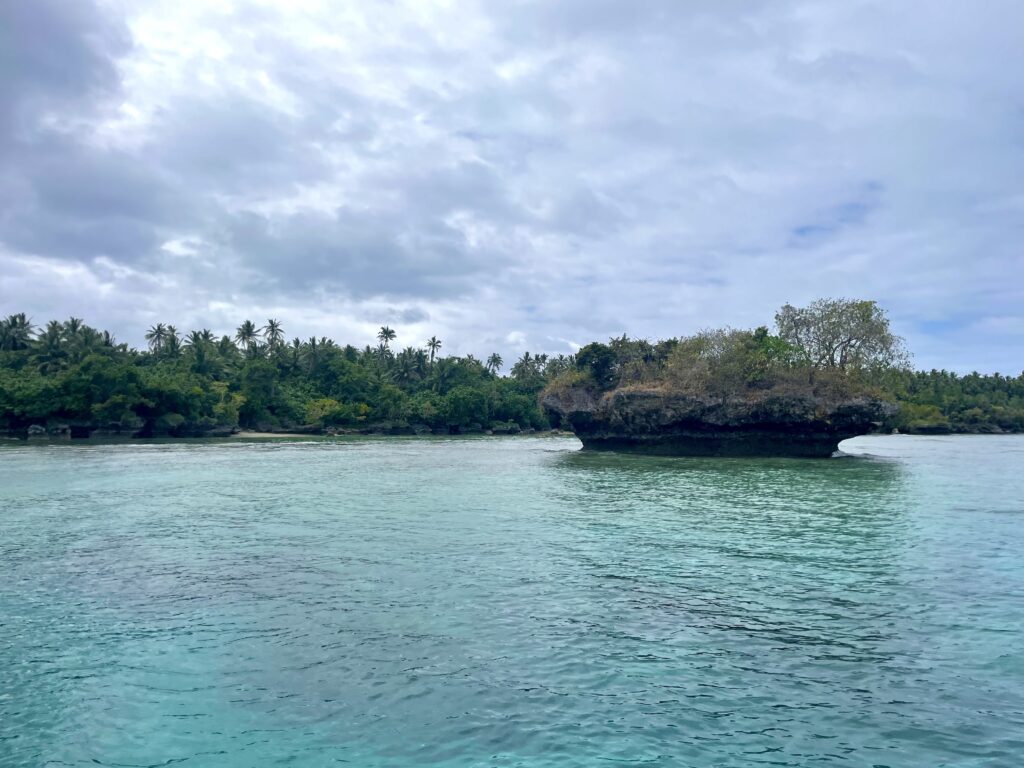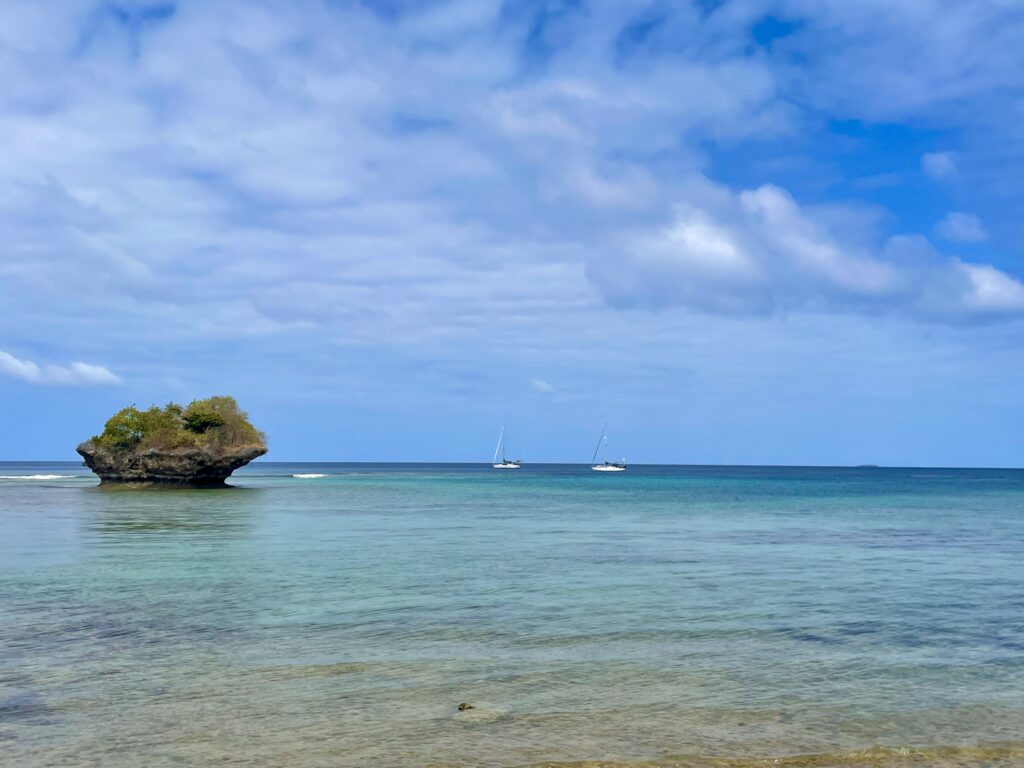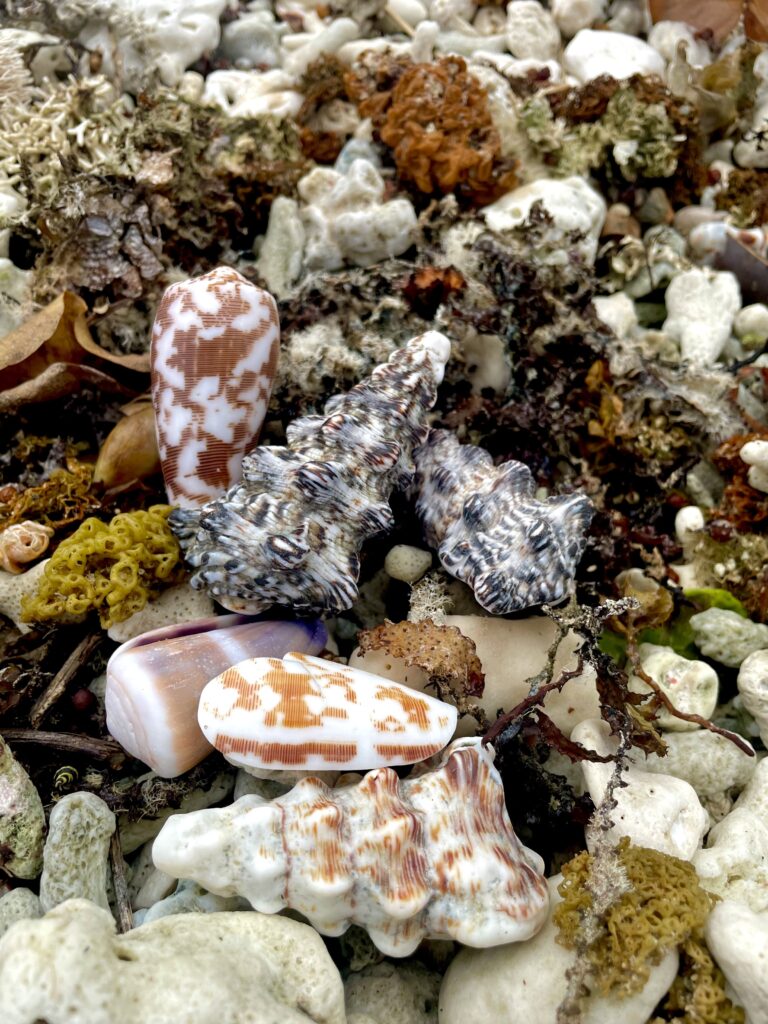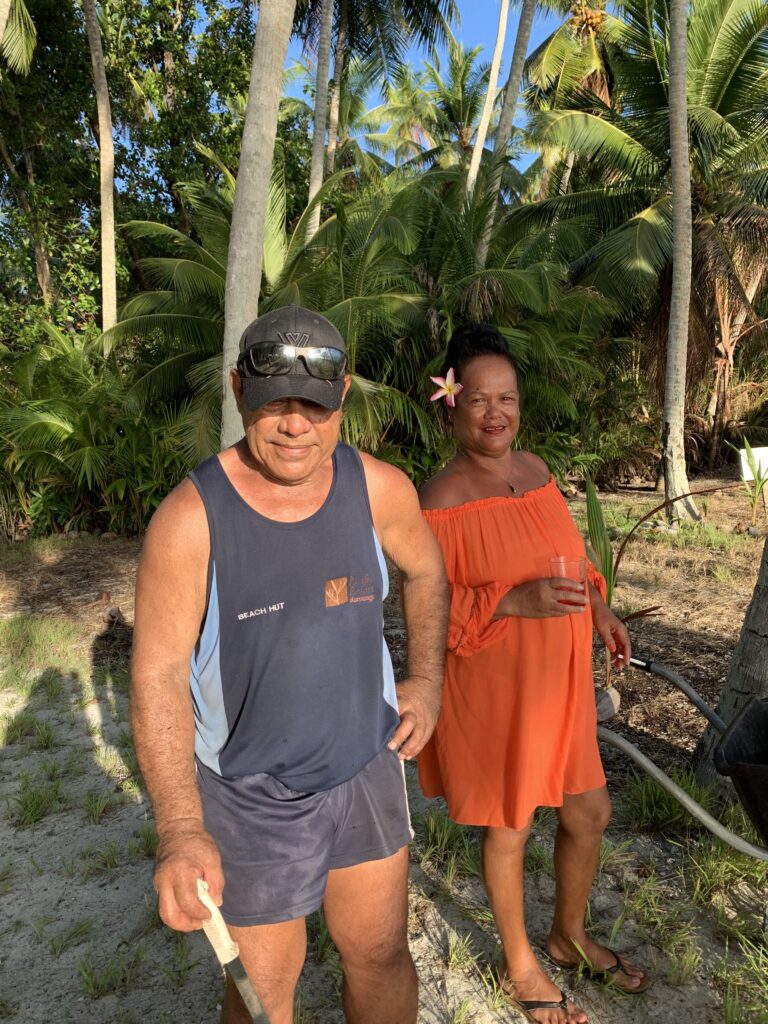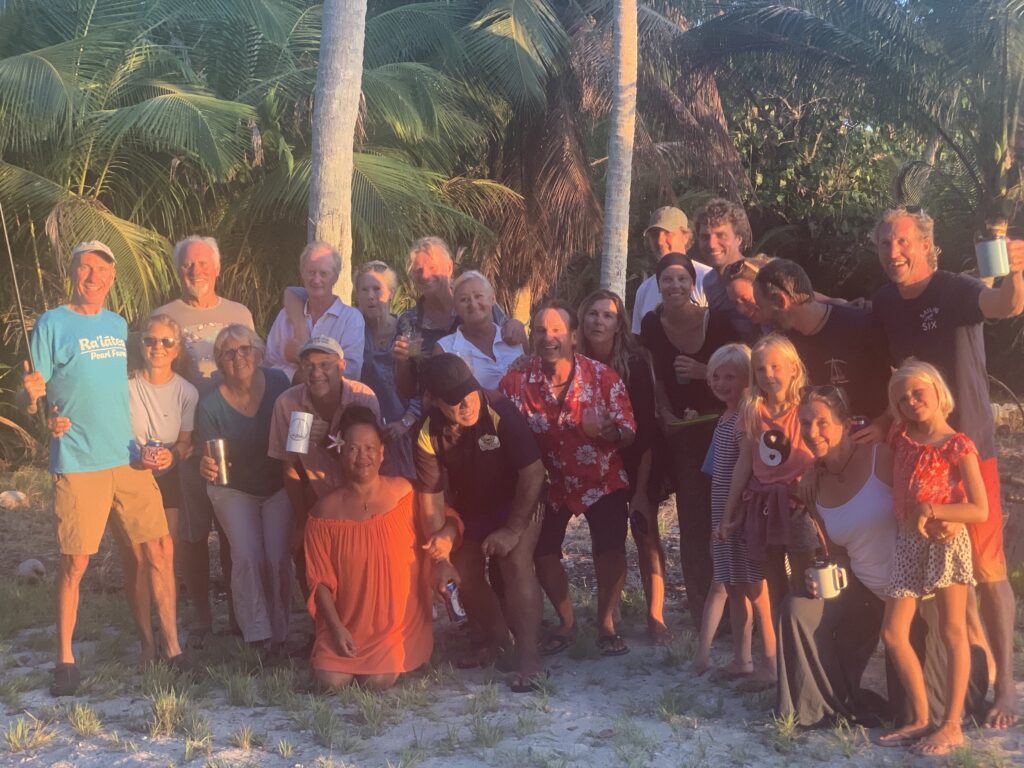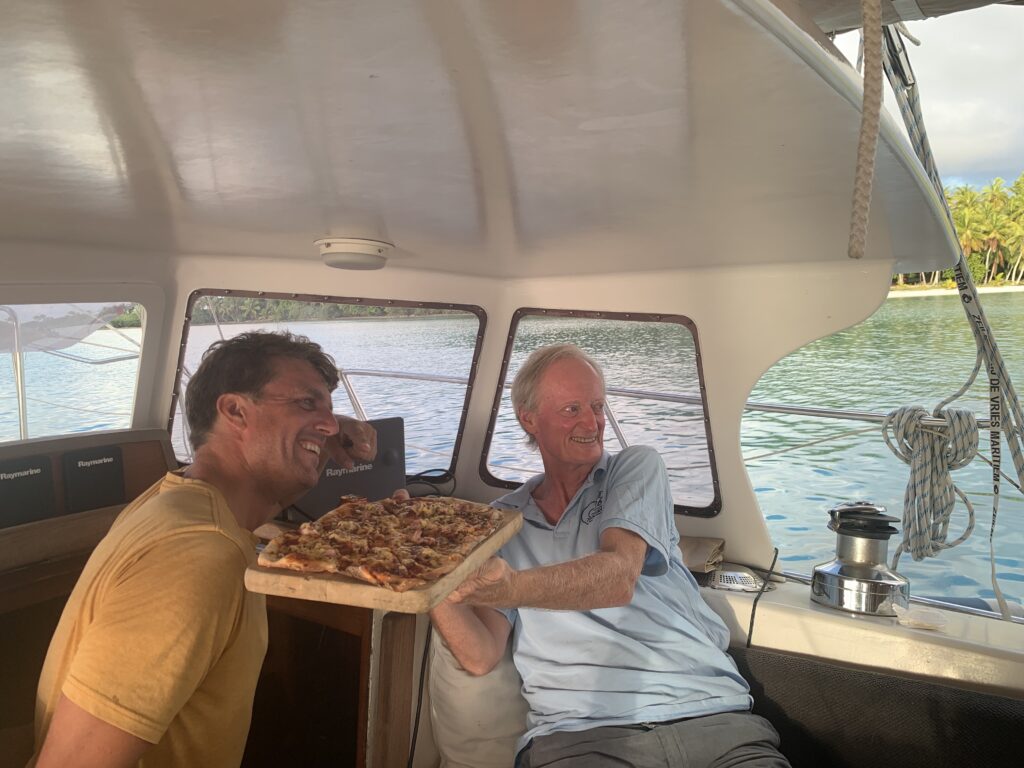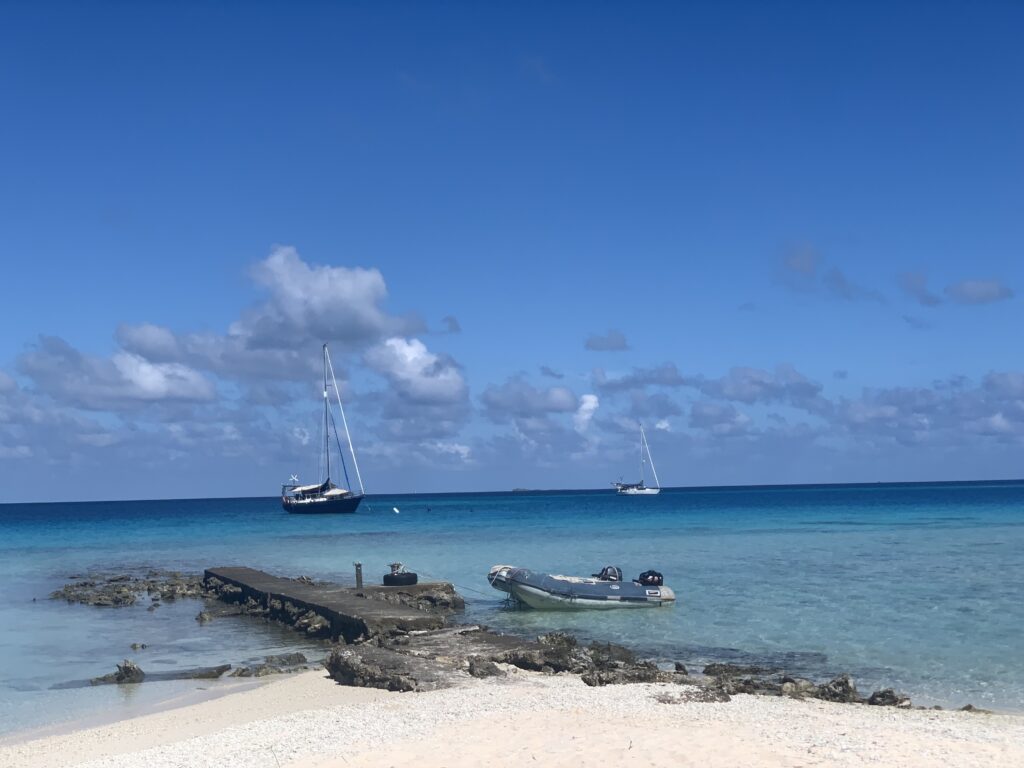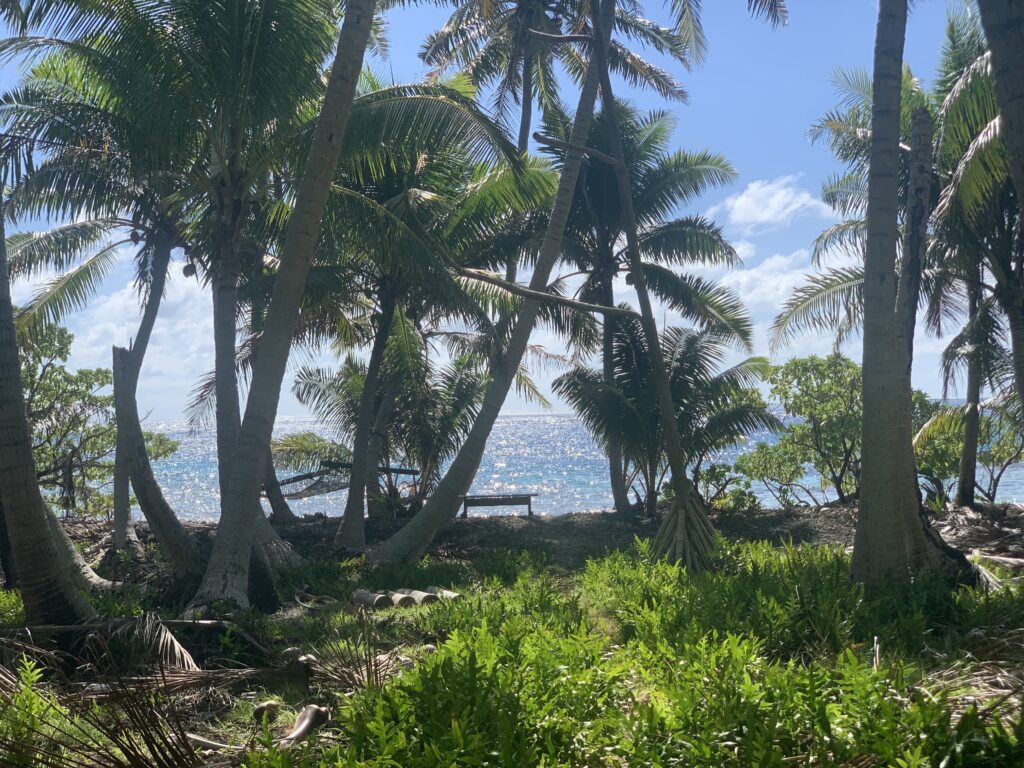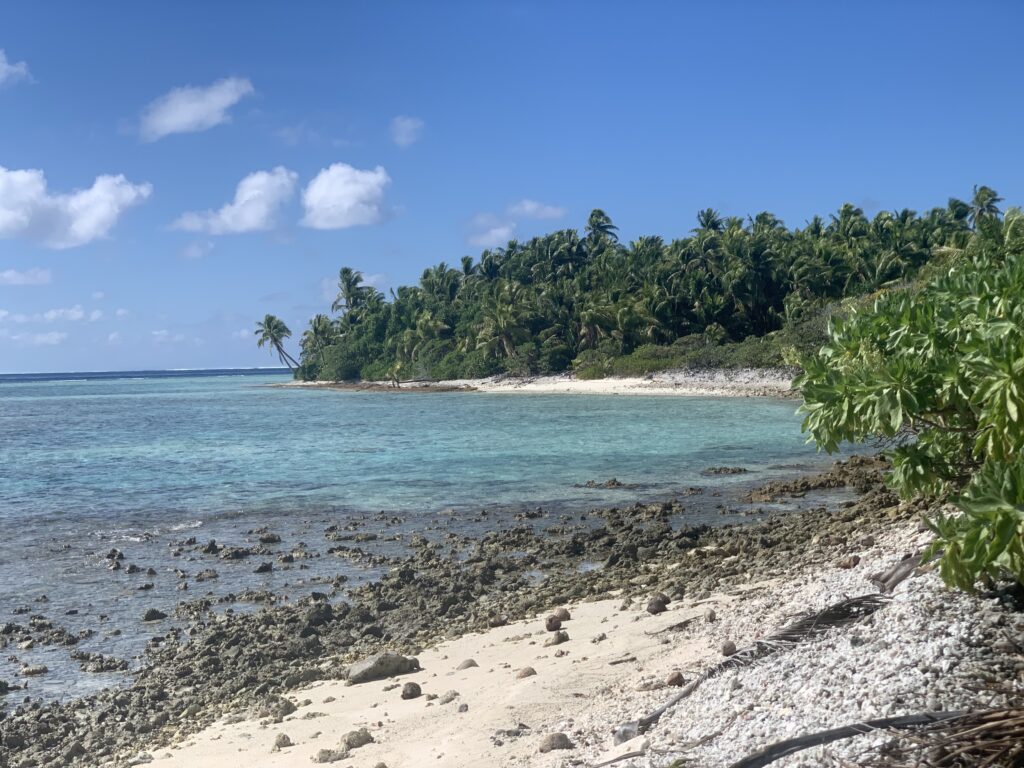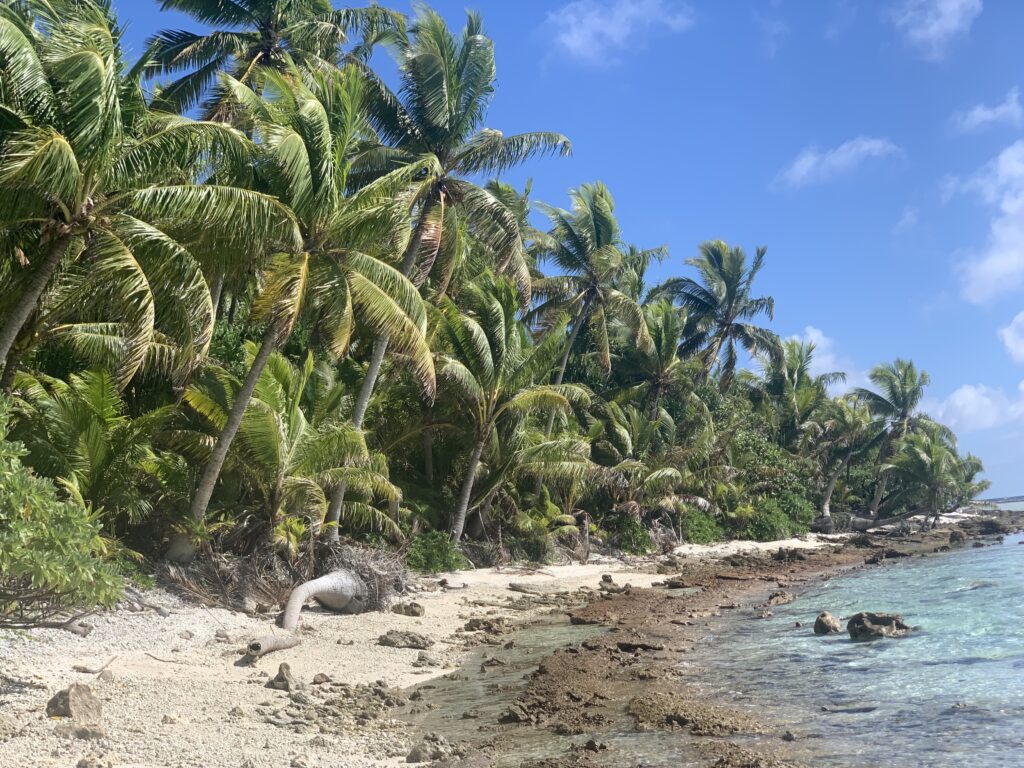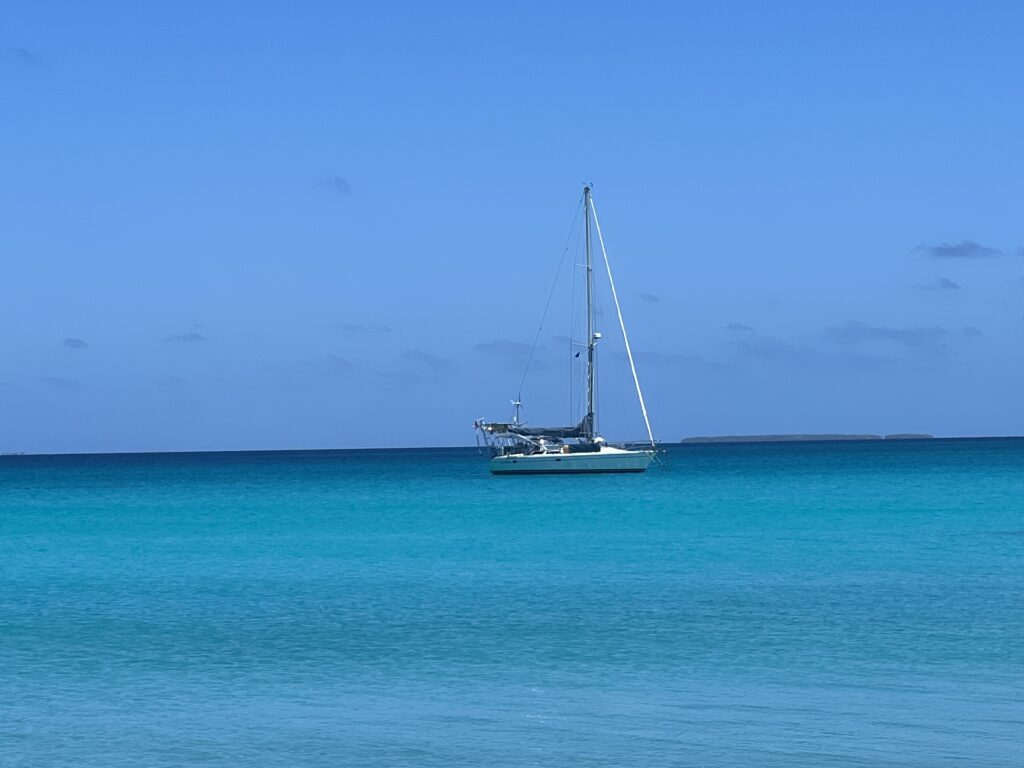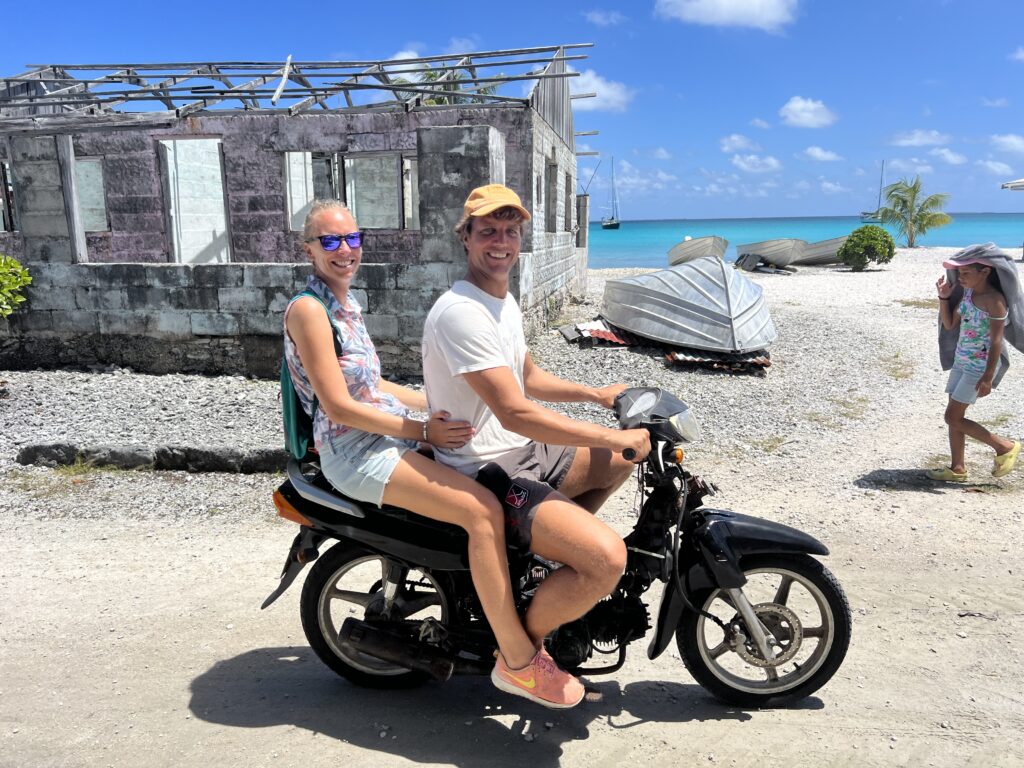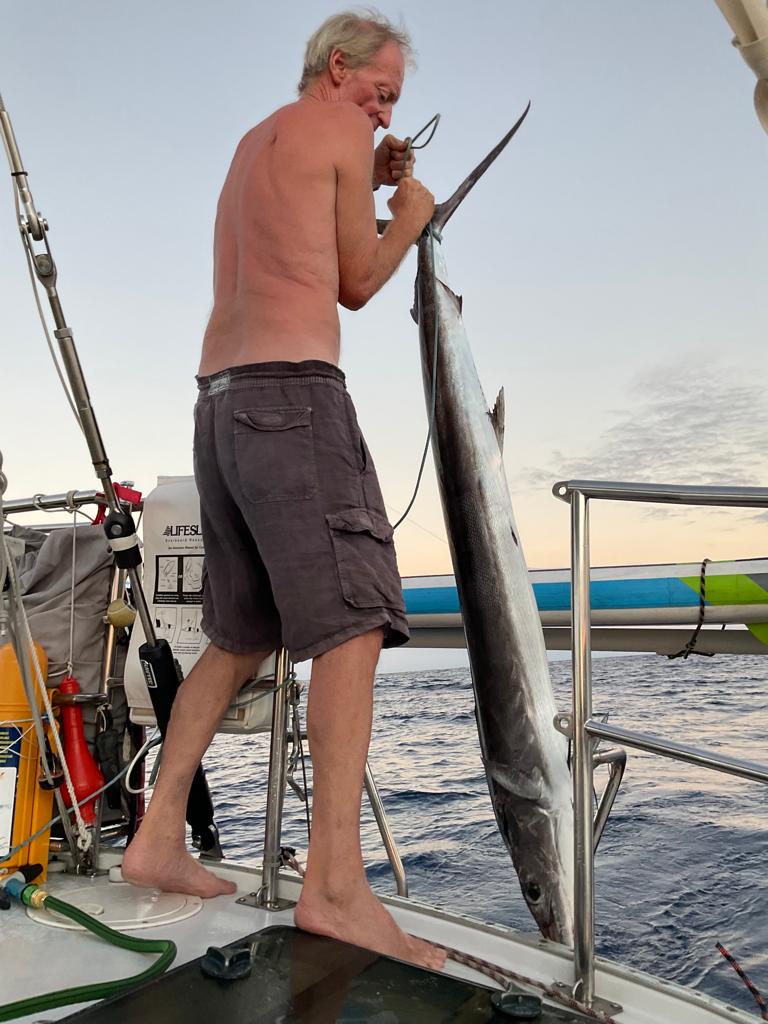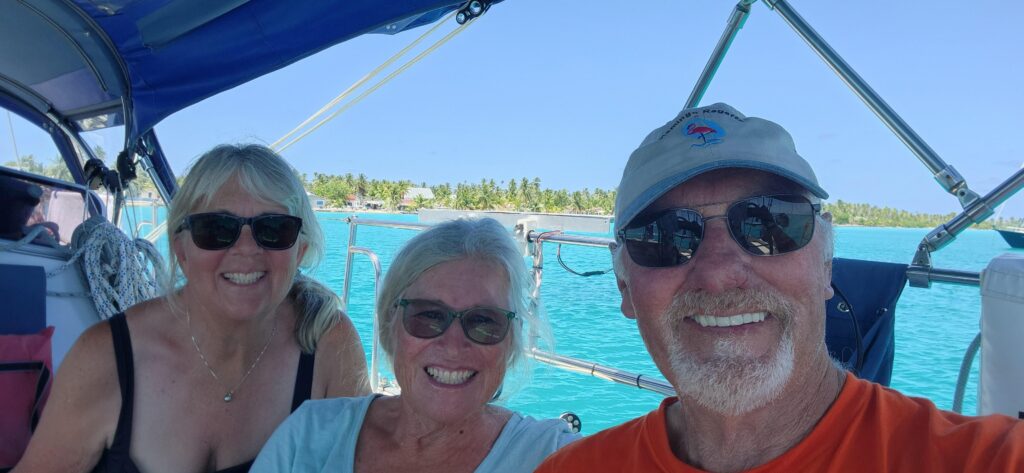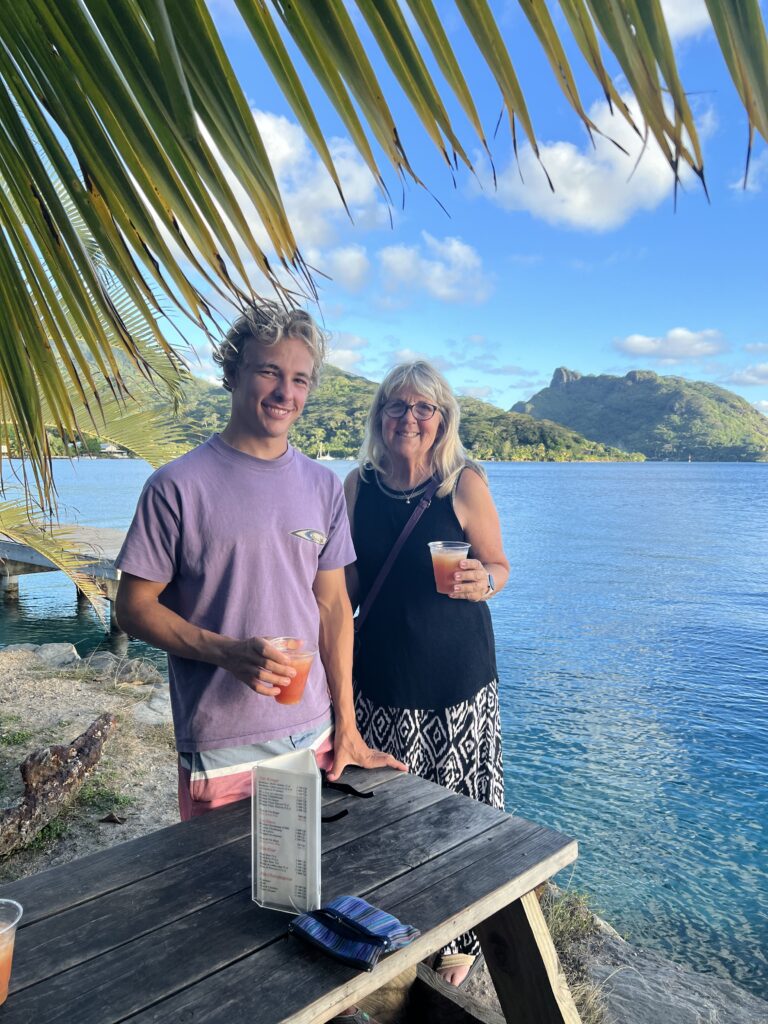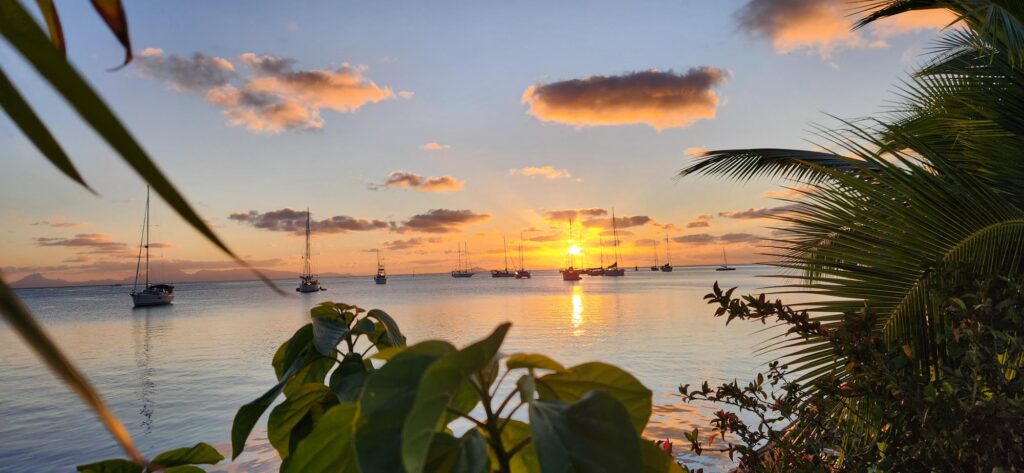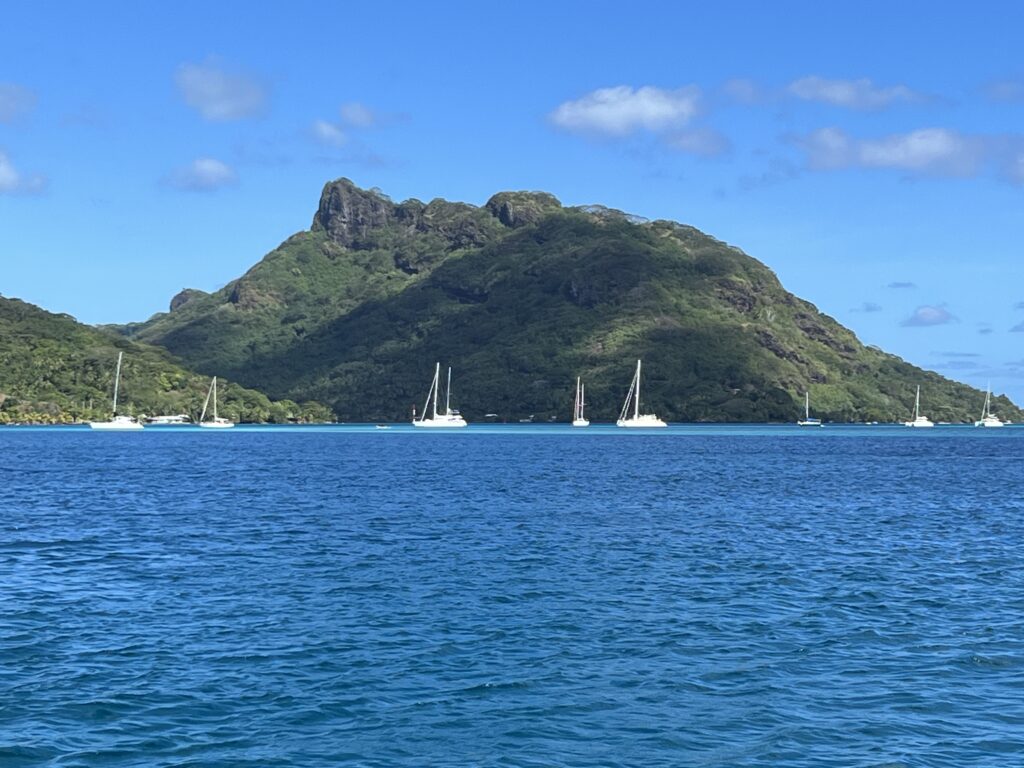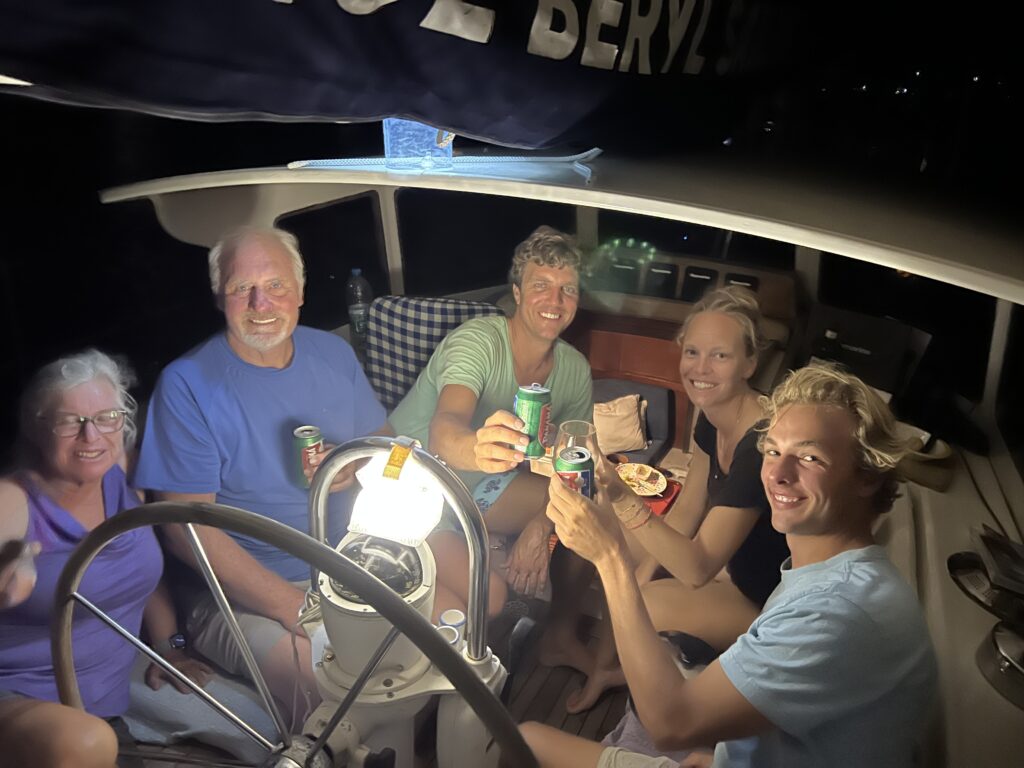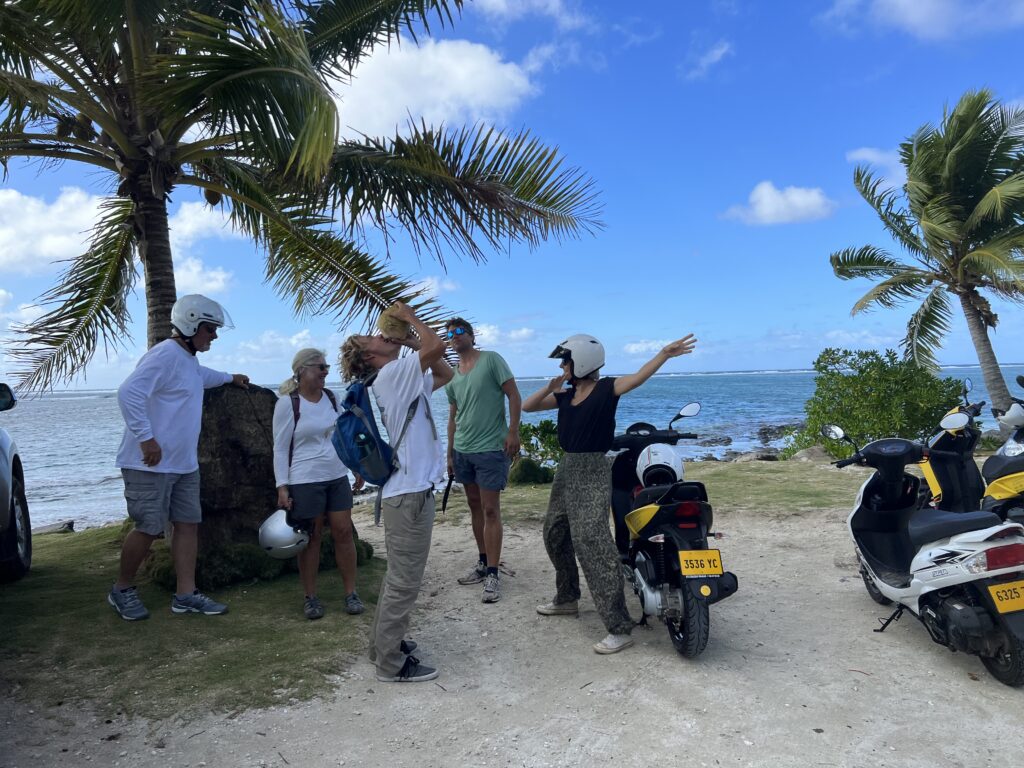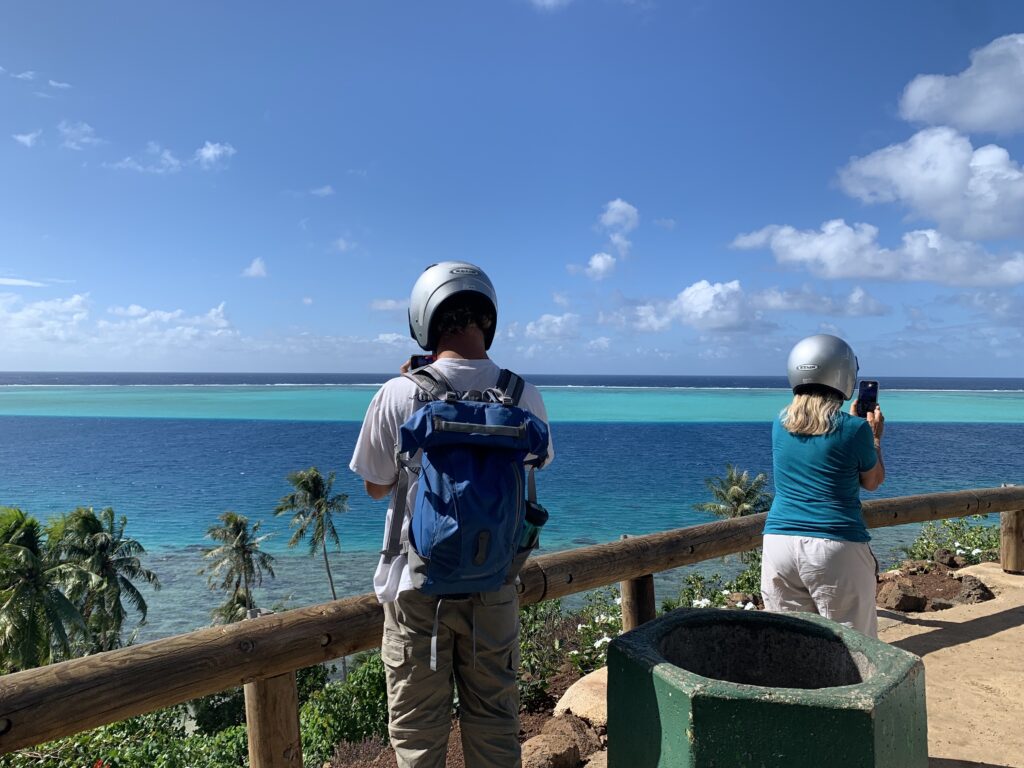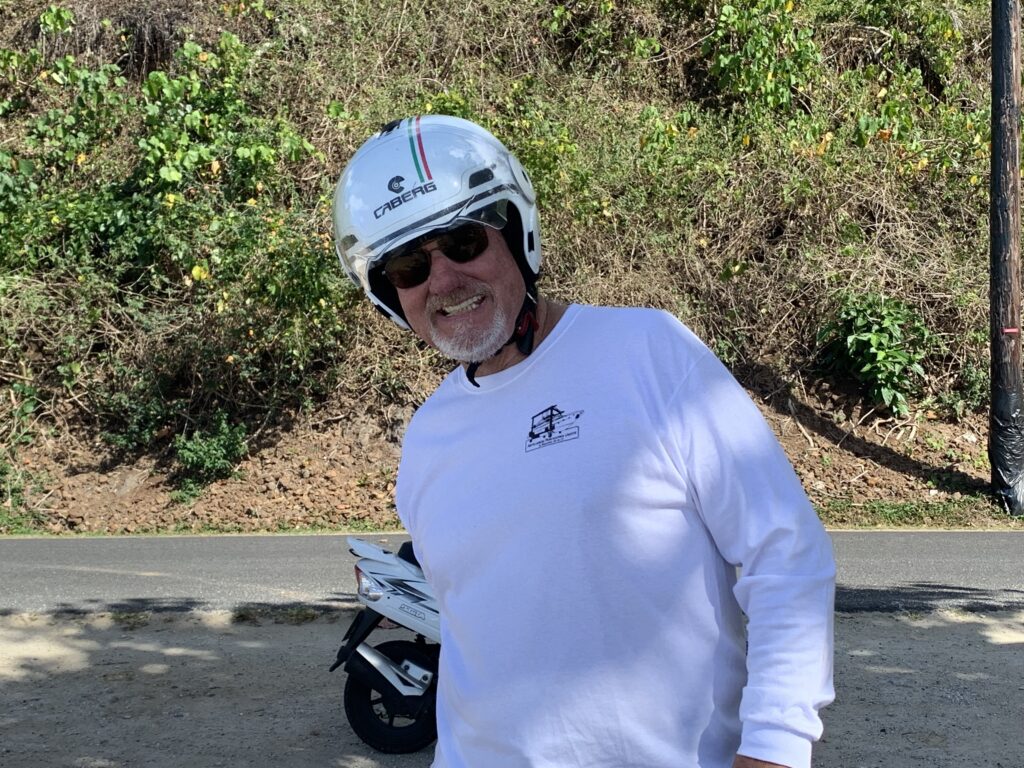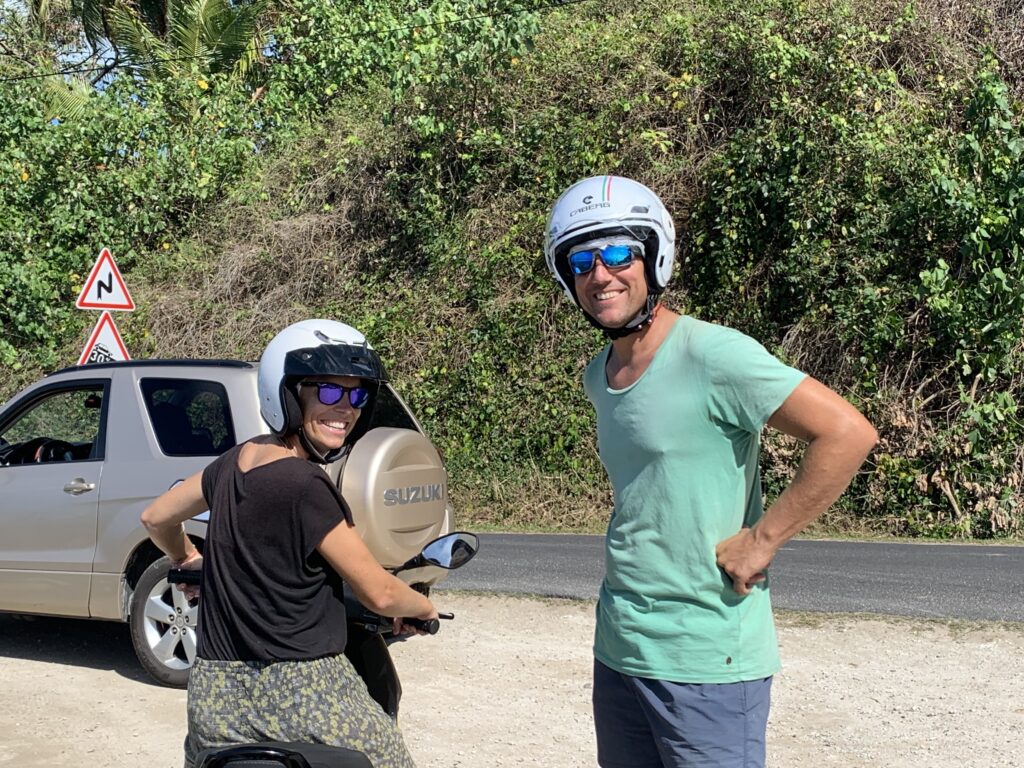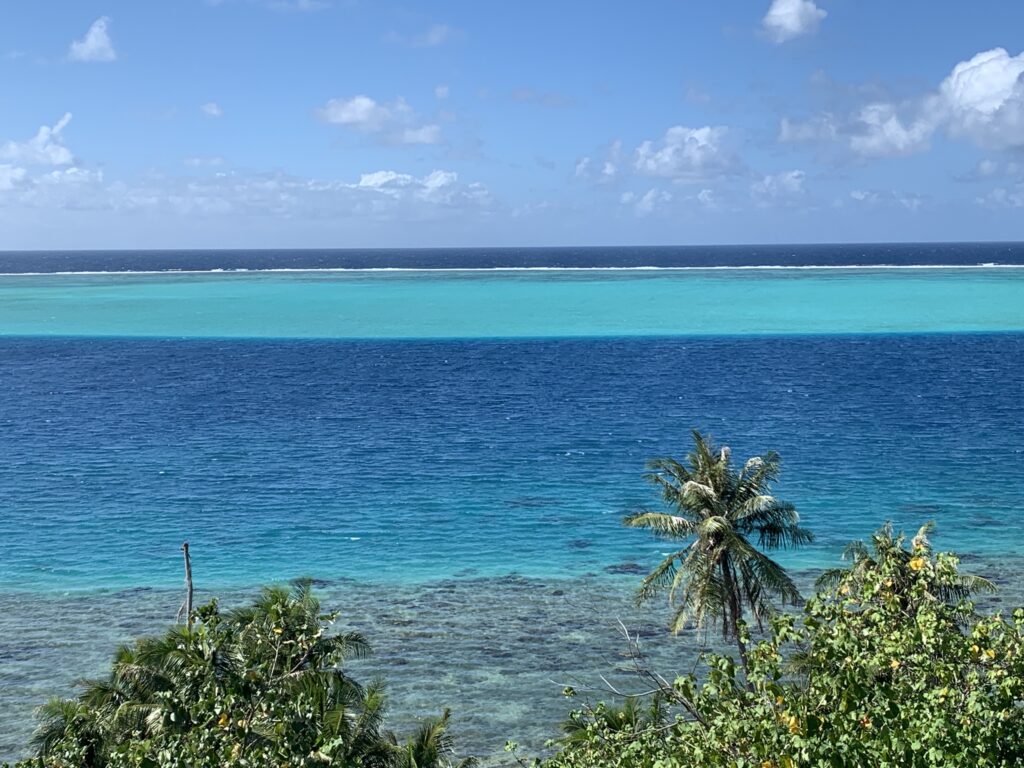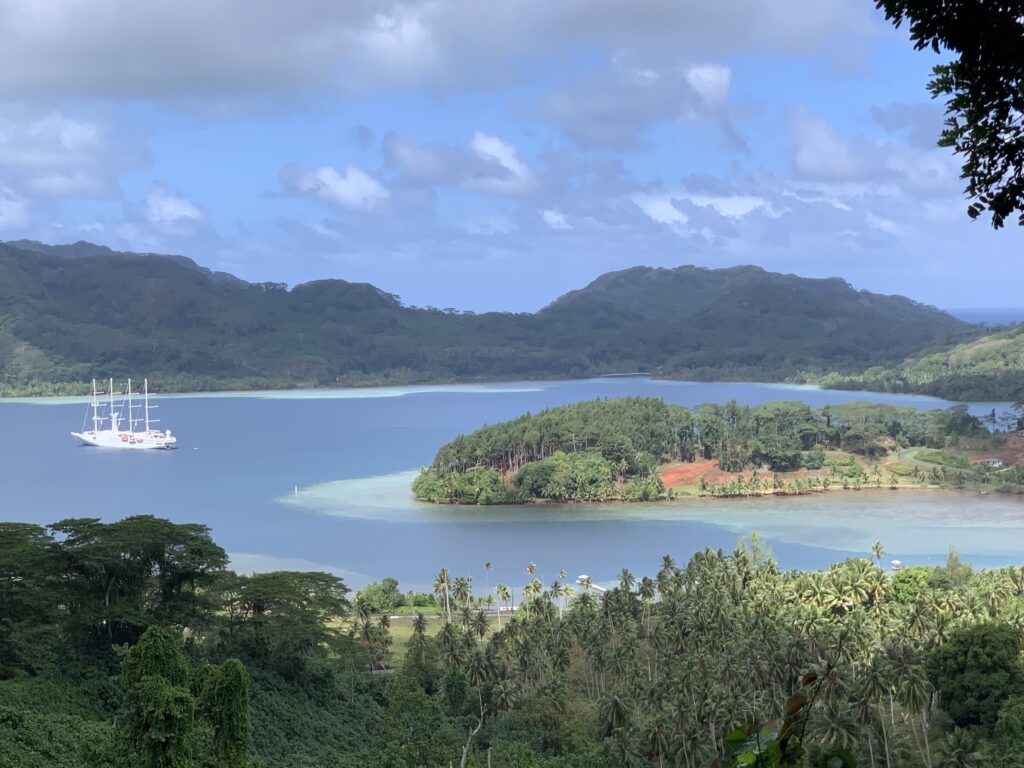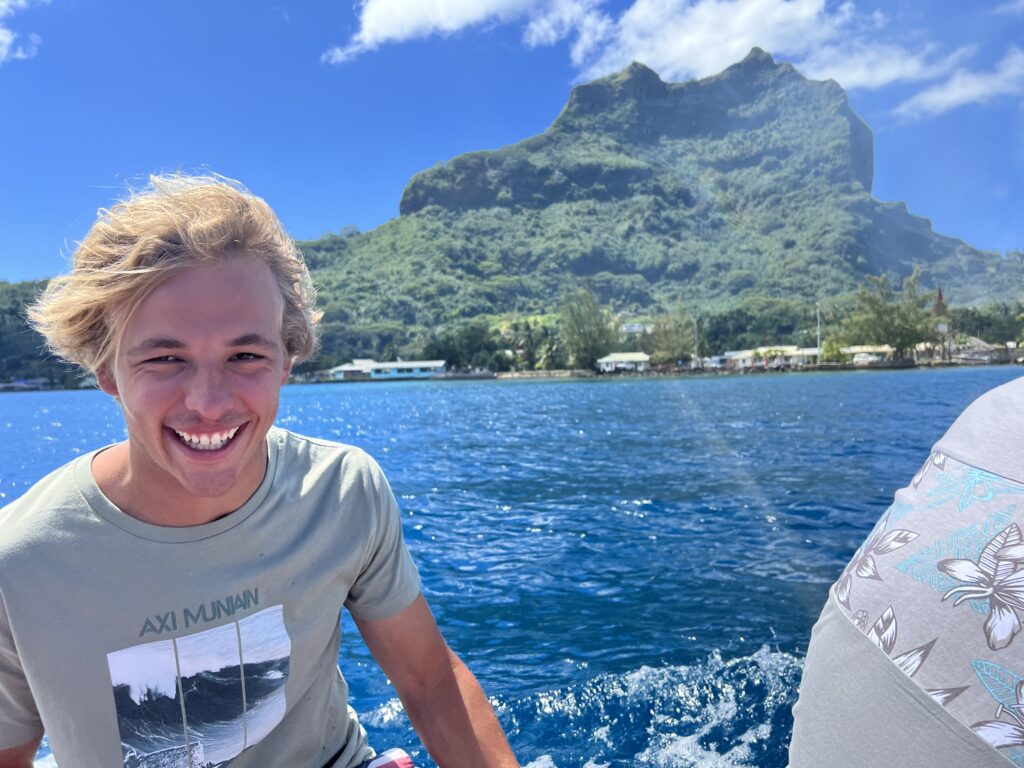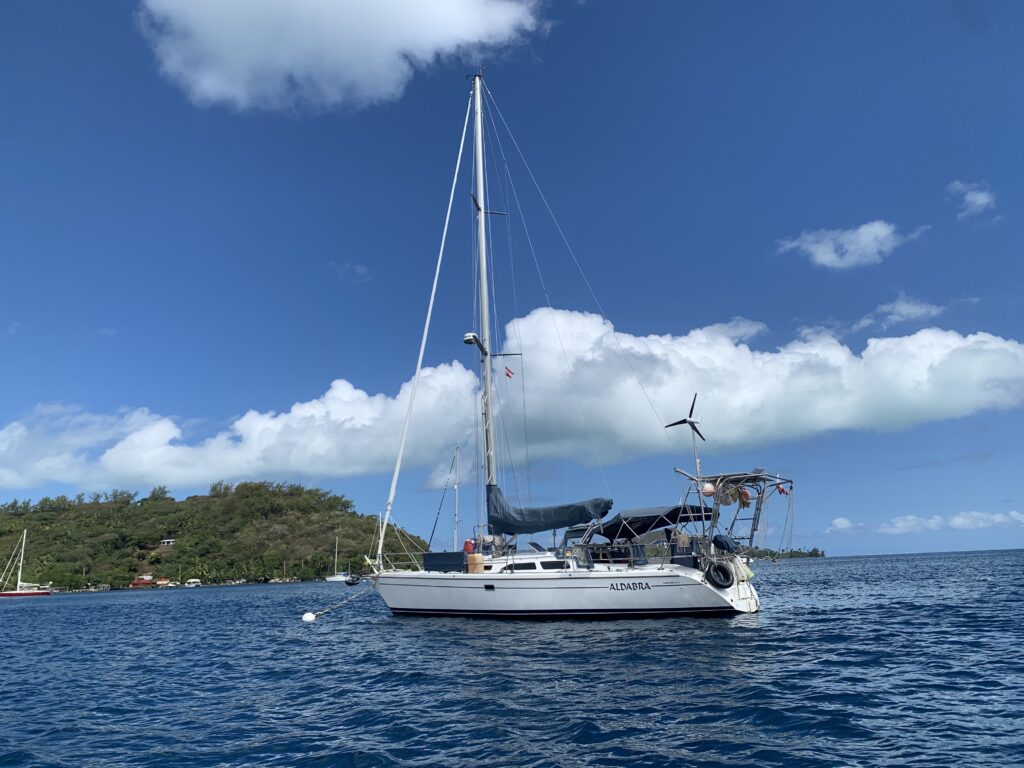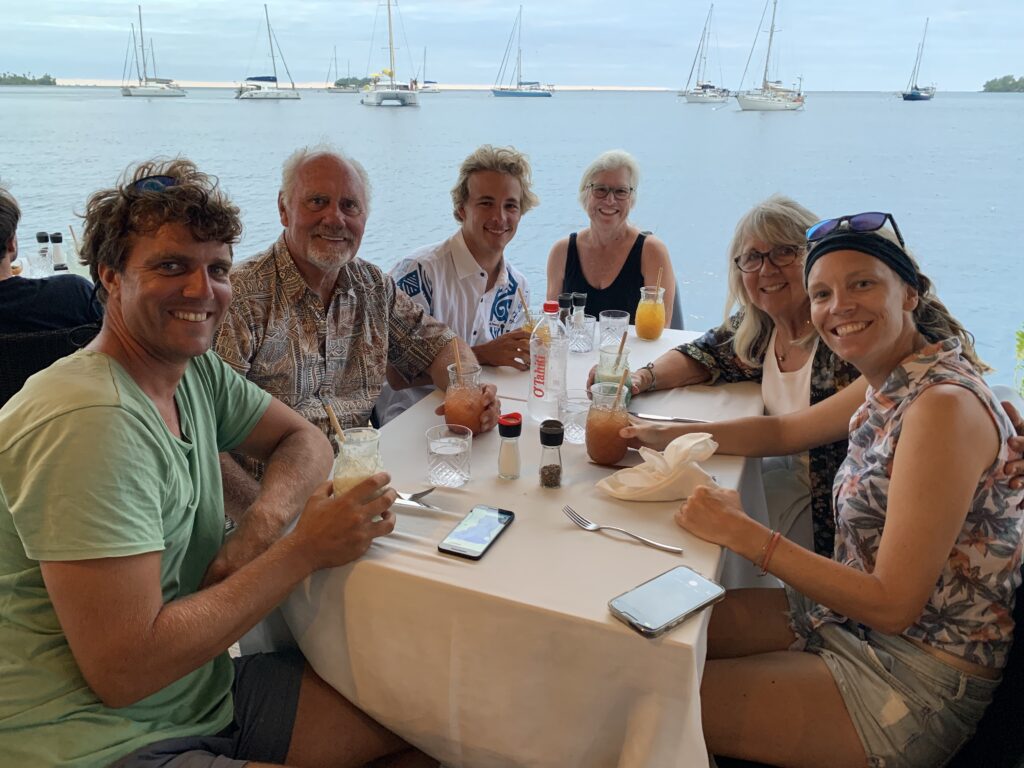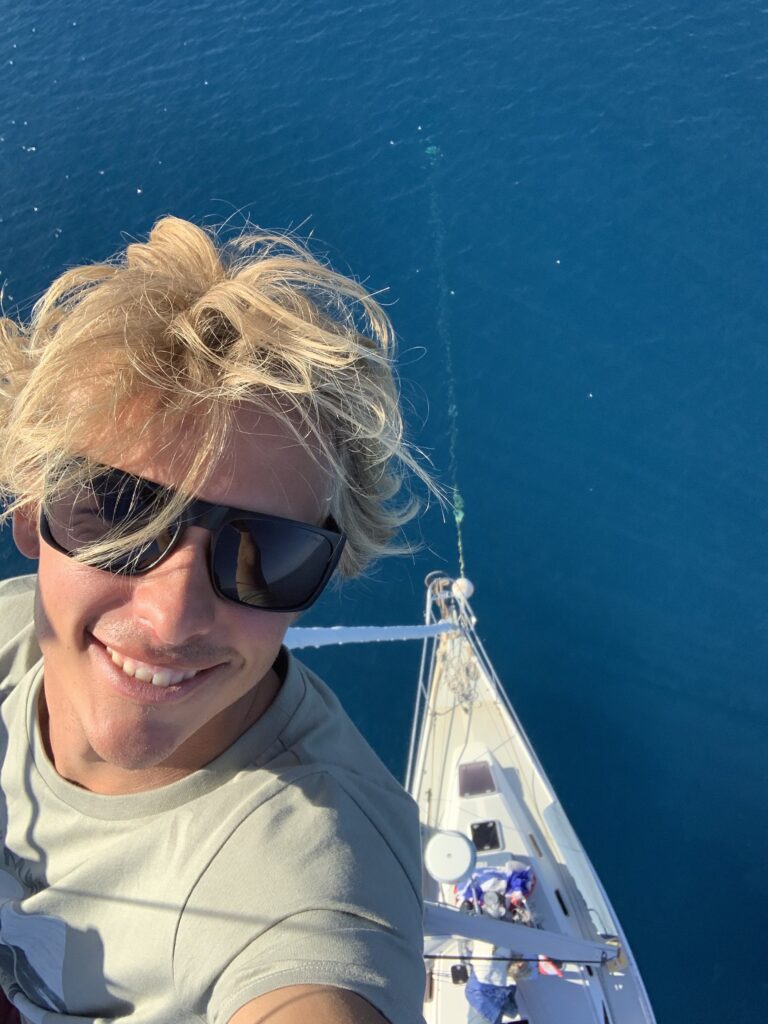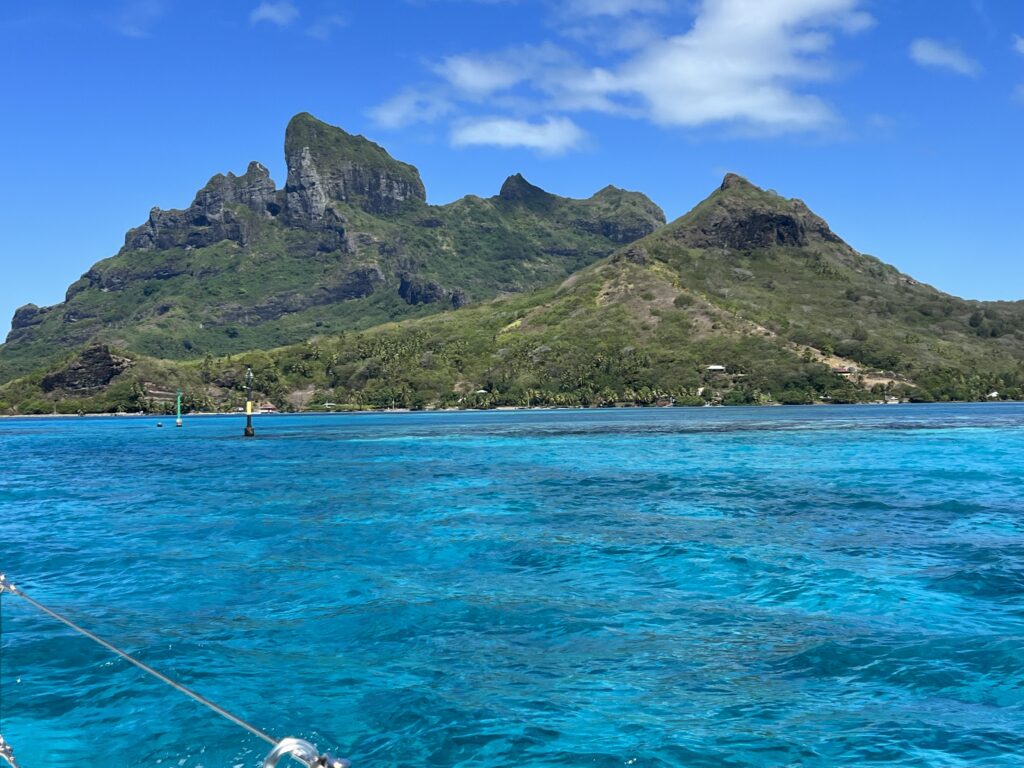The new starter motor for Aldabra’s diesel engine finally arrived from New Zealand on Wednesday afternoon, July 17. It was installed on Thursday morning. Jeff and I then went to town to do final provisioning. After we returned, Ray and Debbie from Thursday’s Child stopped by for a visit. After last-minute preparations, showers and checking out of the marina, we headed out of the marina and traveled about four miles to the anchorage in front of the Cousteau Resort. We anchored next to our friends Bjorn and Anneli on MaricX. They came over for a nice visit and some sundowners. After sunset, we said our farewells because we’re headed in different directions and may not see each other unless I visit Sweden or they visit the U.S. It was a windy night in that anchorage but all was well.
The next morning, we pulled up our anchor shortly after 6:00 a.m. and headed out of the bay, pointing the boat toward the island of Namuka in the southern Lau Group. For several hours, we were close hauled with more wind than predicted. The waves weren’t huge but they certainly weren’t helping us. Eventually, the wind shifted so that we were traveling on a reach, at first a close reach and later a slightly broad reach. The passage took a little more than 28 hours.
We had some issues on the passage. First, we realized early on that the autopilot wasn’t working properly. It engaged, but would not hold its course. Jeff eventually figured out that he could keep the autopilot on track for periods of time if he assisted the wheel by hand. I wasn’t very successful with that technique. I resorted to hand-steering a lot, but even that seemed off, as if there were too much play in the steering. I was quite frustrated during the passage because I couldn’t figure out what was wrong.
At another point, we started the motor but there was a vapor lock and no raw water was going into the motor. Because of that, the impeller broke up. Jeff replaced the impeller and got the impeller bits out of the hose. He did this in a half hour and it would have taken me much longer to accomplish the task.
At another point during the passage, the anchor broke free from a hook that was securing it and it bounced off the bow of the boat a few times. It bent a stainless steel pipe that was installed in New Zealand, but it didn’t break the pipe and it didn’t damage the hull. I secured the anchor with an additional line and we had no more issues with it. While I was on the bow, a wave crashed down on top of me and flooded the anchor locker. It wasn’t the only time on the passage that I would have to change into dry clothes.
We arrived at Namuka behind Womble, who had left Taveuni nine hours after we left the Cousteau anchorage. (They are a fast catamaran.) With waypoints provided by Ian on RaLa, we successfully navigated the pass and dropped anchor in a beautiful bay. RaLa was already there and the three boats had the place all to ourselves. That afternoon the six of us hiked an hour through the jungle to the village. There we presented packages of kava root to the chief. He made a traditional speech in Fijian, which welcomed us to their island and gave us permission to explore.
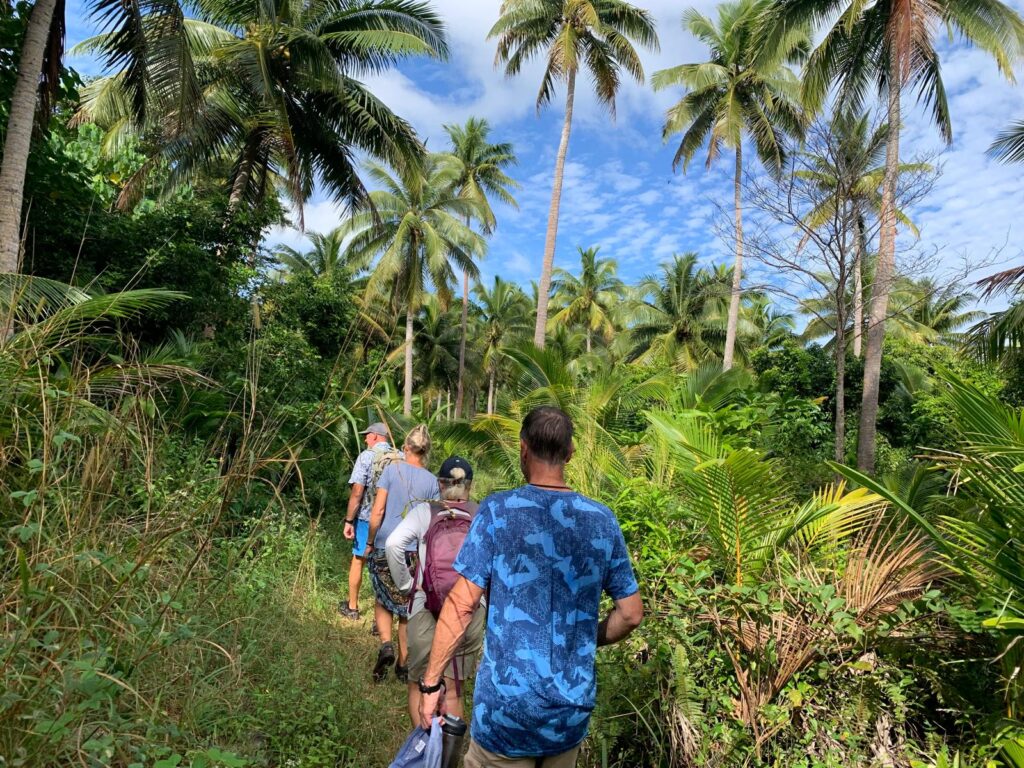
Katrina Ibbotson took this image of us walking to the village in Namuka
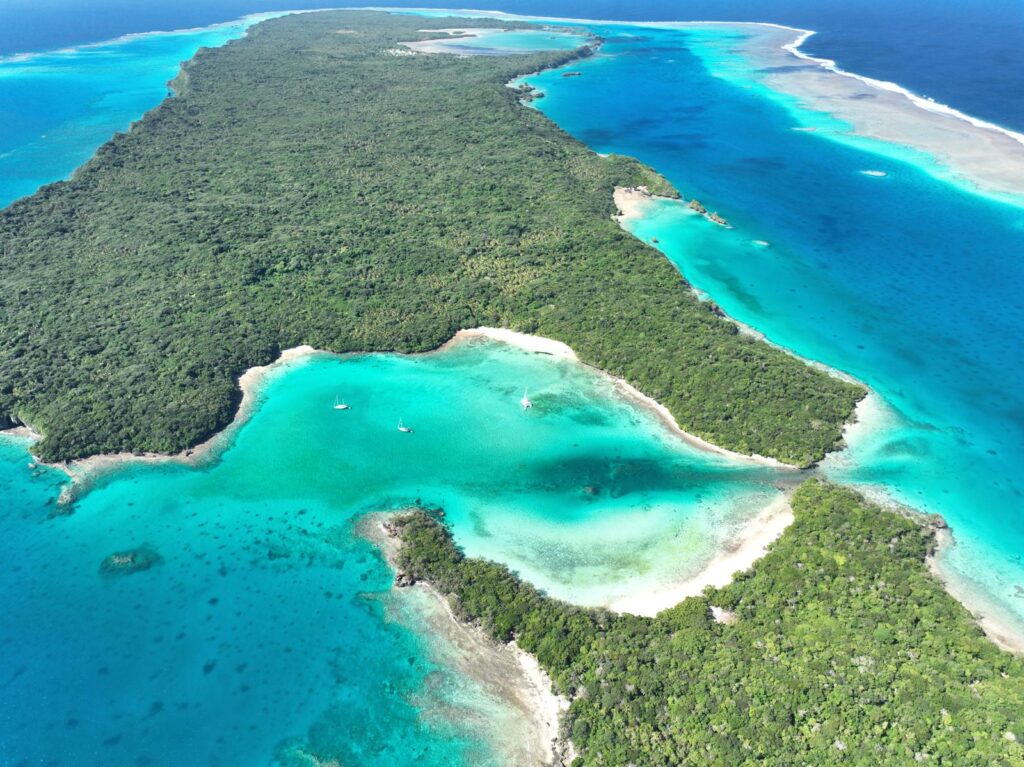
Dale Ibbotson took this photo of us in Namuka. Aldabra is the boat in the middle.
After hiking back to anchorage, we all went back to our respective boats. Jeff and I had lots of tidying up to do after the passage and we needed sleep after being awake most of the night before.
The next day, Dale and Katrina and Ian and Laura took their paddleboards, and Jeff and I took our kayaks to explore around the bay. We tried to go through a cut that led to some snorkeling but the current was so strong we couldn’t get out of the cut. We then found a spot inside the bay for some snorkeling. Later that day we all joined up on the beach for beers and a game that involved strategically knocking down wooden pins placed on the sand. Dale and Jeff did quite well. The others of us were more inconsistent.
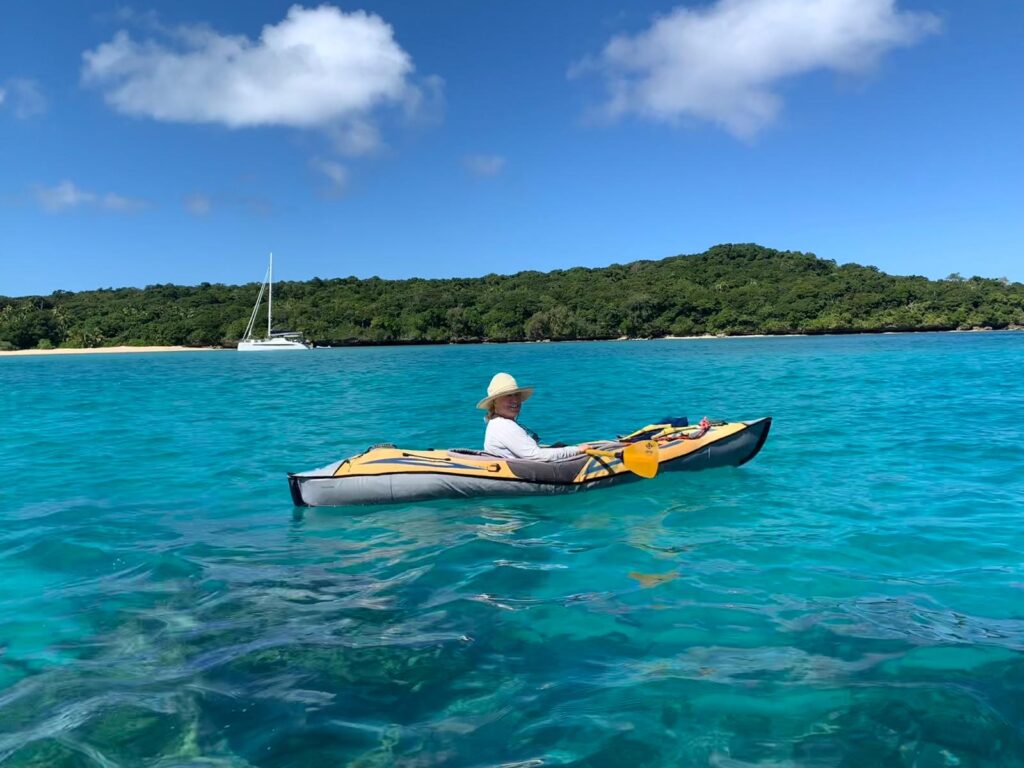
Kayaking in Namuka, courtesy Katrina Ibbotson
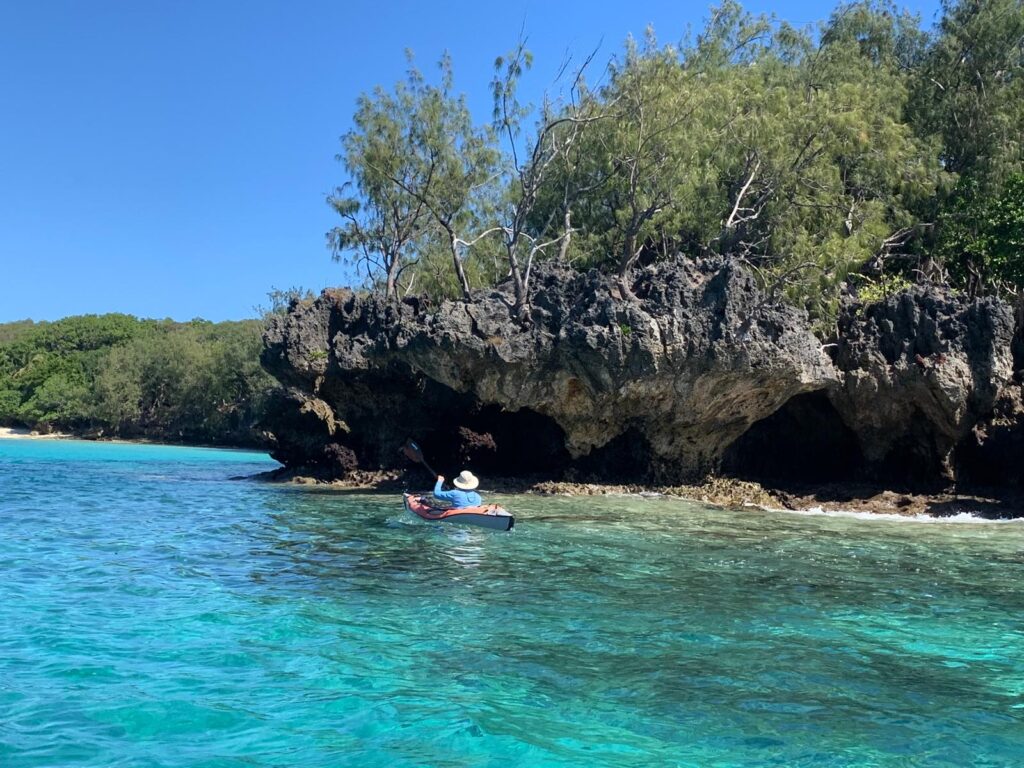
Jeff kayaking, courtesy Katrina Ibbotson
On Monday, July 22, after consulting the weather predictions, we all pulled up anchor and sailed southeast about five hours to the island on Ogea. Once inside the pass, we sailed up to the entrance of a small bay that is rather shallow. Jeff and I anchored outside the bay while Womble and RaLa went in and got themselves situated. The anchorage was crowded with several catamarans and one monohull. RaLa touched bottom as they went in but got themselves anchored. We took the dinghy into the bay and did several soundings with the handheld depth sounder before having tea on RaLa. We left their boat around 5:30 with the intention of spending the night outside the bay. But as we approached Aldabra, the boat was rolling a lot, so we decided to pull up anchor and head in.
The tide had come up enough in the previous two hours that we didn’t hit bottom, although we probably only had inches below the keel at times. We dropped anchor with enough water under the keel and spent a reasonable night, although it was quite rolly.
The next morning, several of the boats left and we moved deeper into the bay, closer to RaLa. By the end of the day, all the boats had left except for one, other than we three. We went to shore and hiked forty minutes through the jungle to the village. The walk was very nice and the people in the village were quite hospitable. The village has been subject to flooding from a rising sea for the last ten years, so they have installed cement culverts for drainage and elevated cement walkways to move around the village. We presented our kava roots to the son of the village chief for sevusevu. He and a few other villagers sat and talked with us for about a half hour. Then we followed Vuli, one of the villagers to a garden where he found a stalk of bananas that we could buy from him.
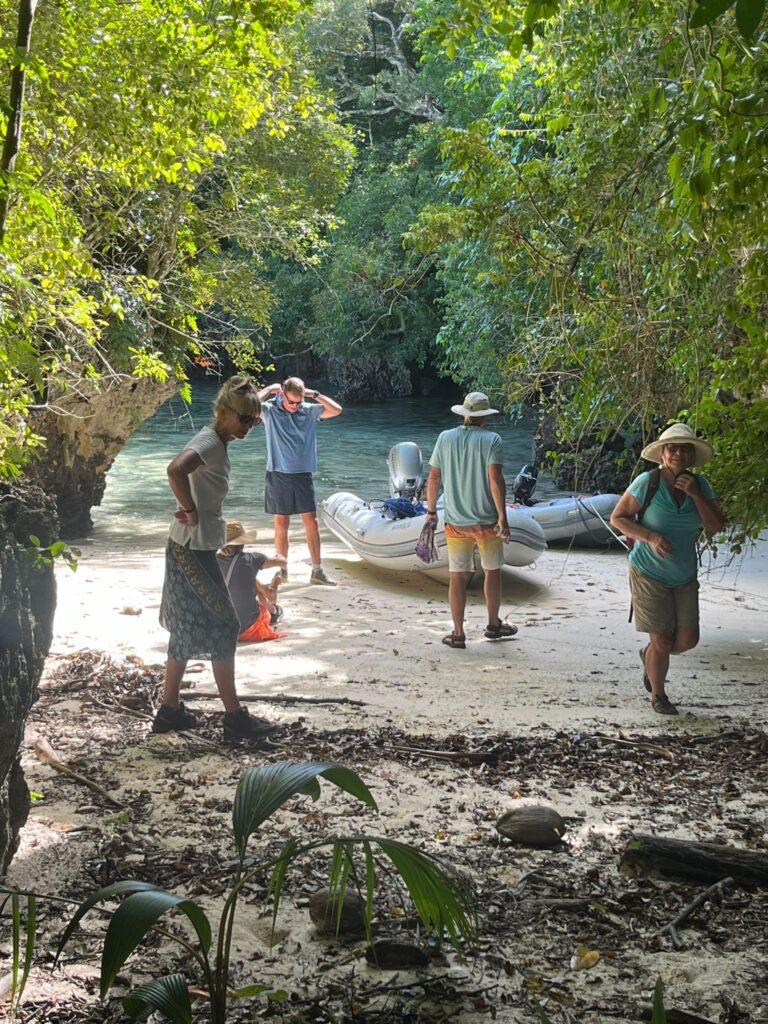
Getting ready for our walk to the village in Ogea
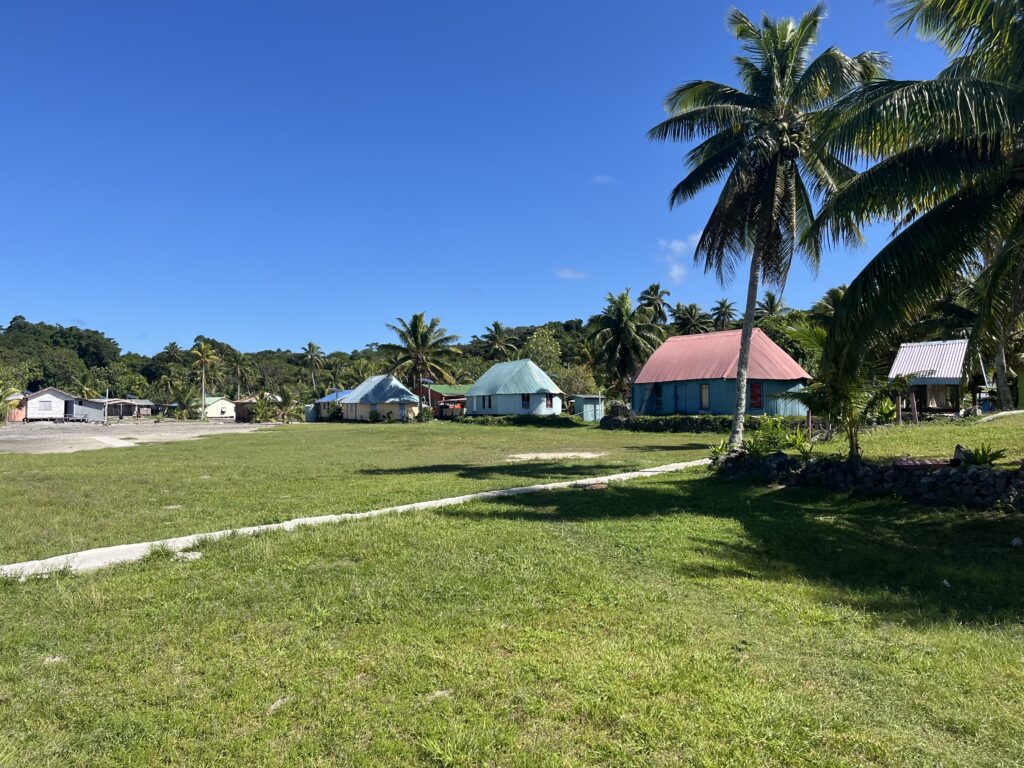
Jeff took this image of the village in Ogea
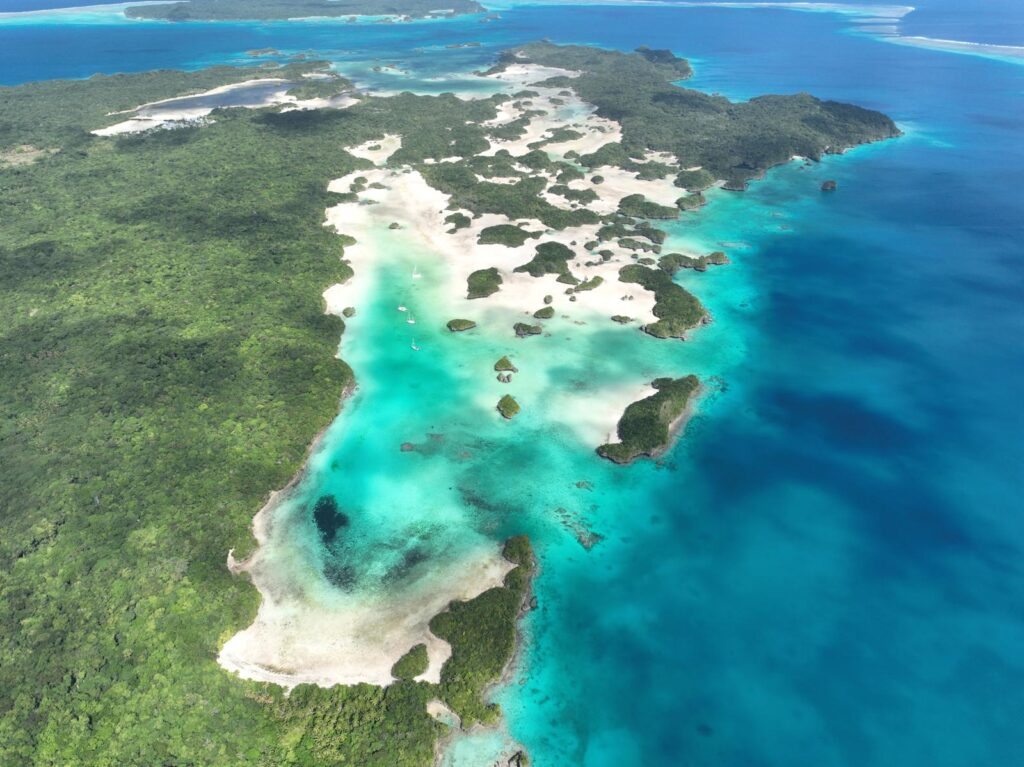
Dale Ibbotson took this shot of the boats in Ogea
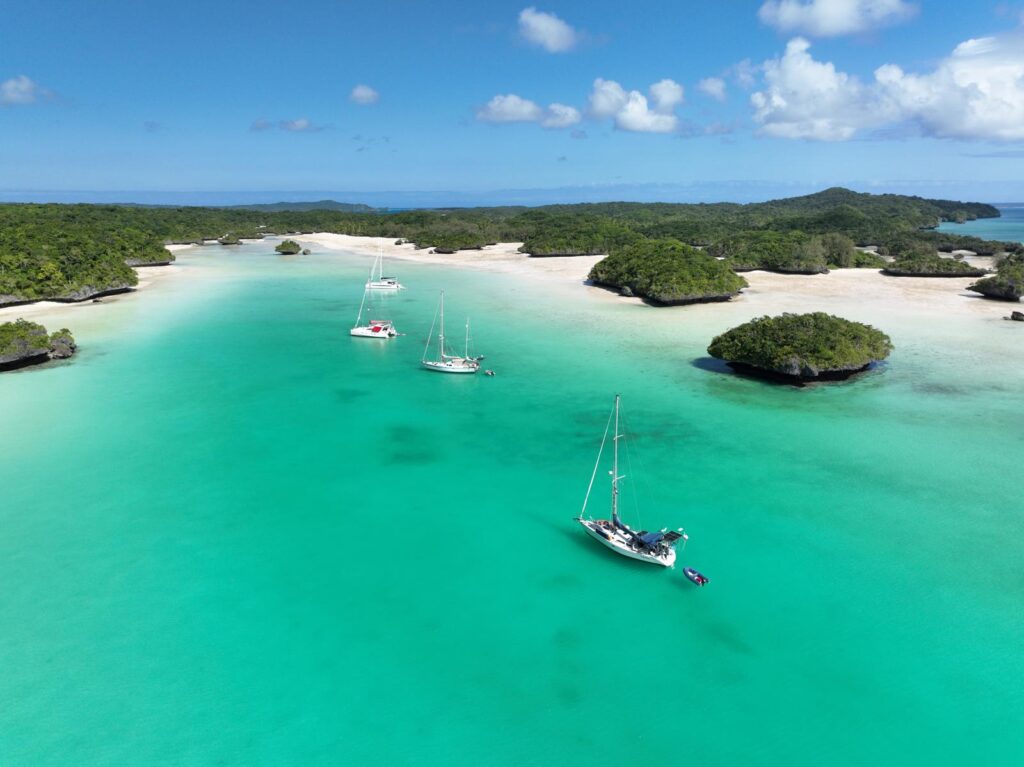
Another shot from Dale Ibbotson in Ogea. Aldabra in the foreground. Very low tide.
After returning to the anchorage and having lunch, Jeff and I joined the others for paddling around the bay. Later we met up on the beach for sundowners, along with Terry and Brad from the one other boat, Ndebt. The night was calm and the anchorage wasn’t very rolly.
Today, Wednesday, July 24, we’ve enjoyed a quiet morning on the boat. Moderate winds are blowing so it’s not hot enough to drive me into the water. I’ve been studying my autopilot manual to figure out if there is anything I can do to fix it. So far I’m still mystified. On the bright side, I can see that Thomas on Saoirse has arrived in the Nawi Marina after a passage from New Zealand and Minerva Reef. He has onboard his boat some new autopilot parts for me. So there is a chance that the boats will rendezvous sometime in the near future and maybe Jeff and I can install those new parts, we’ll see.
